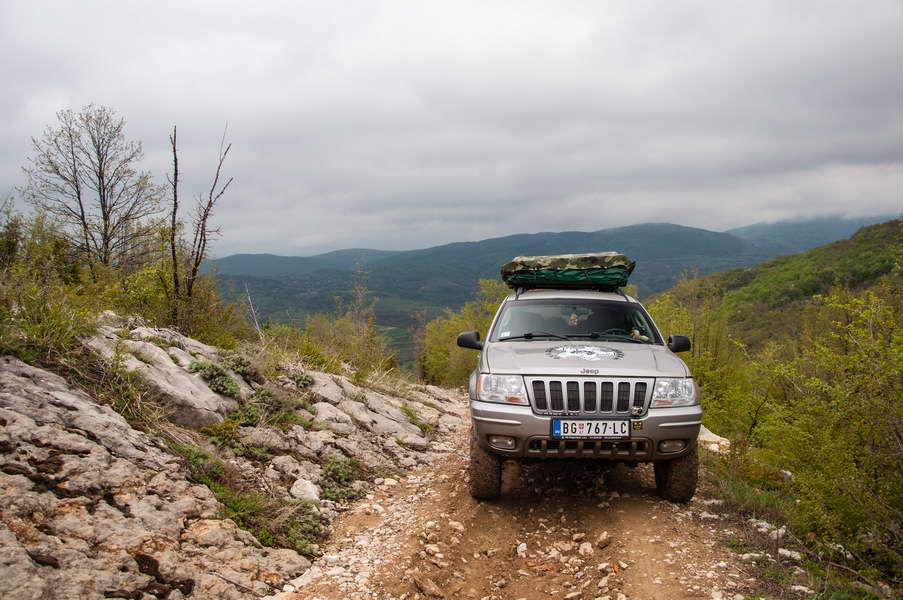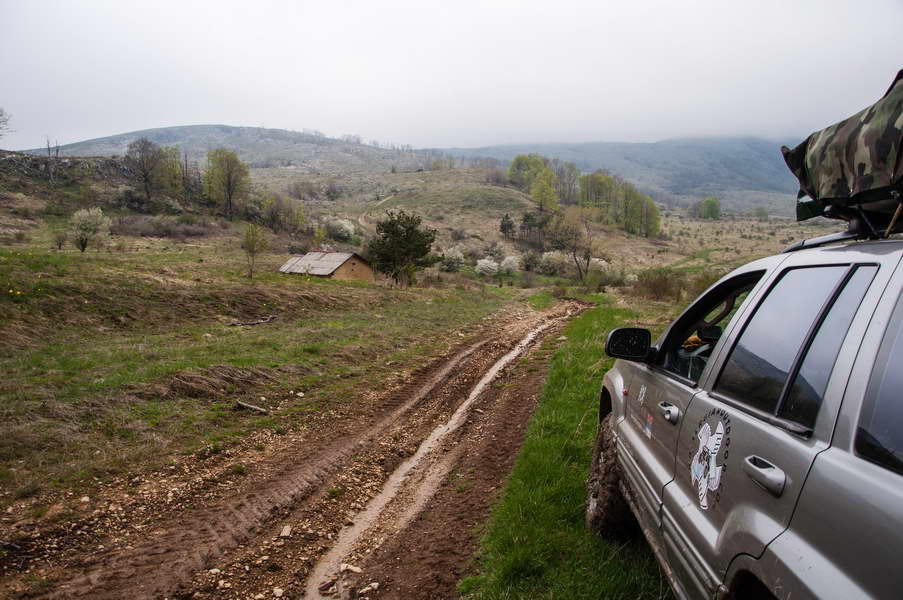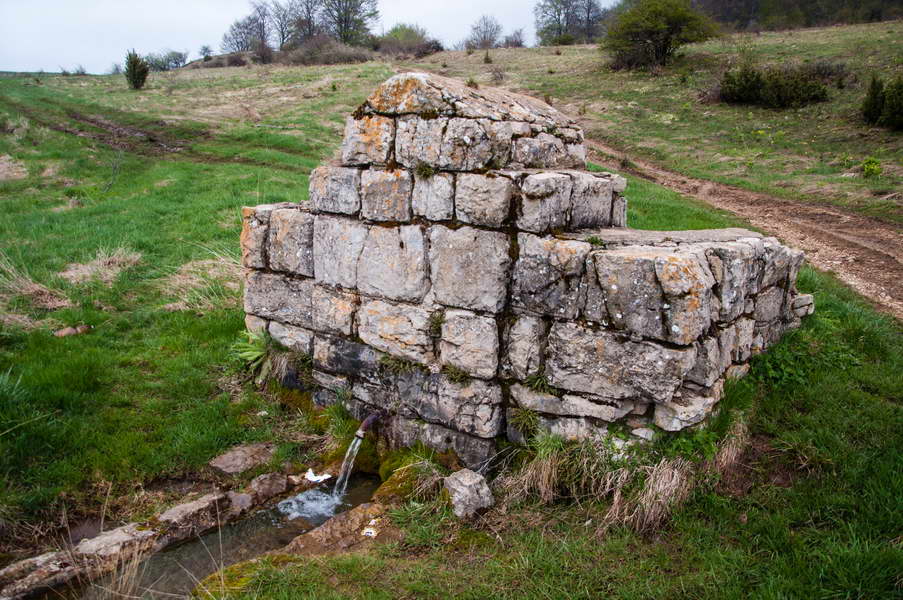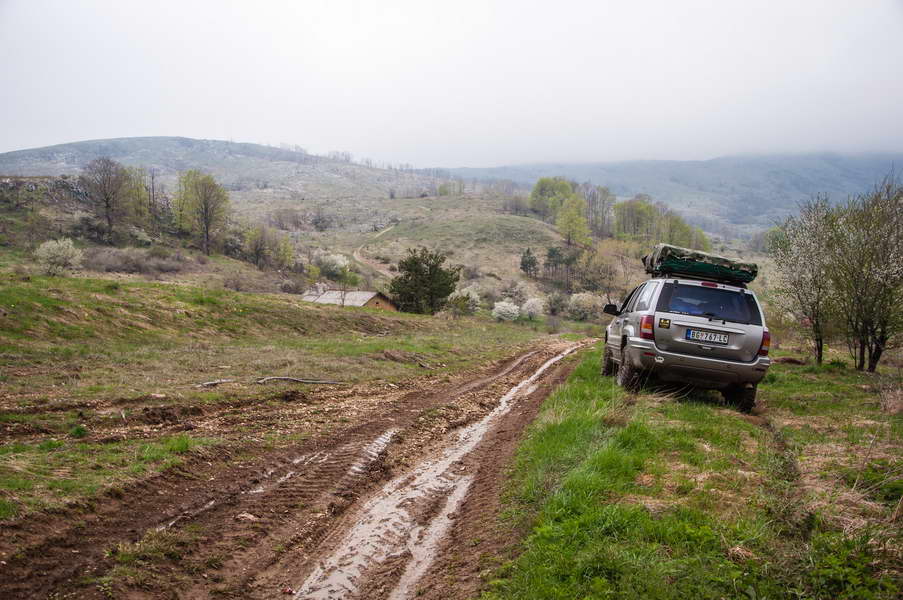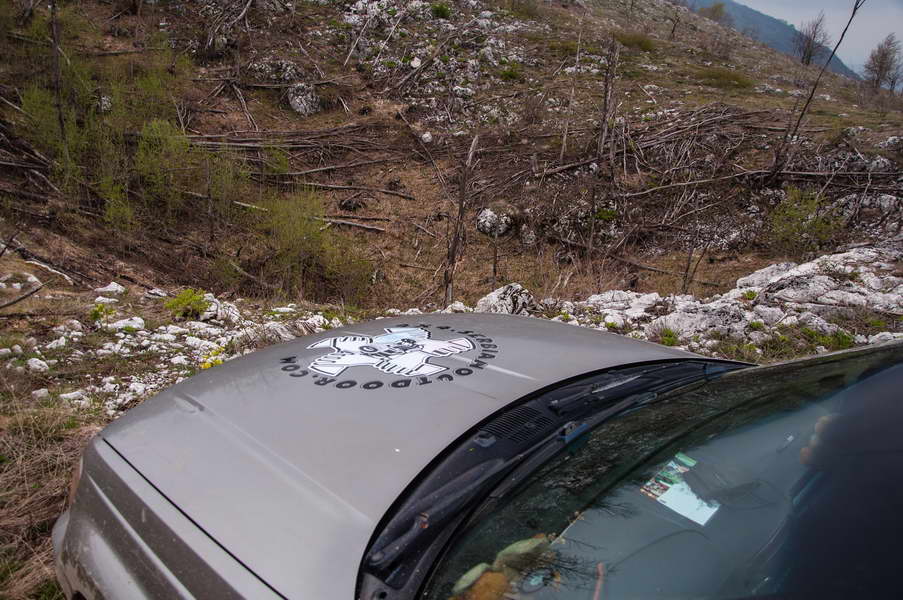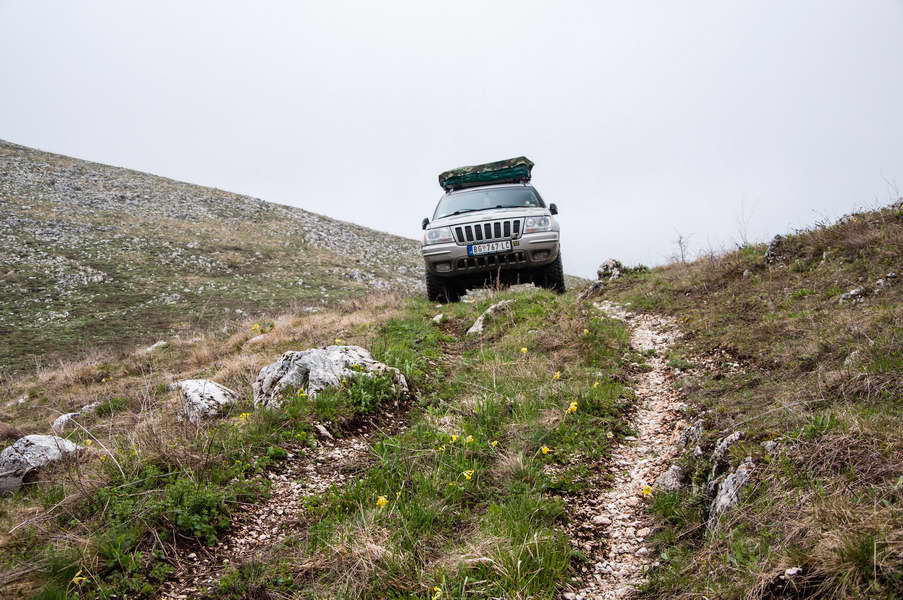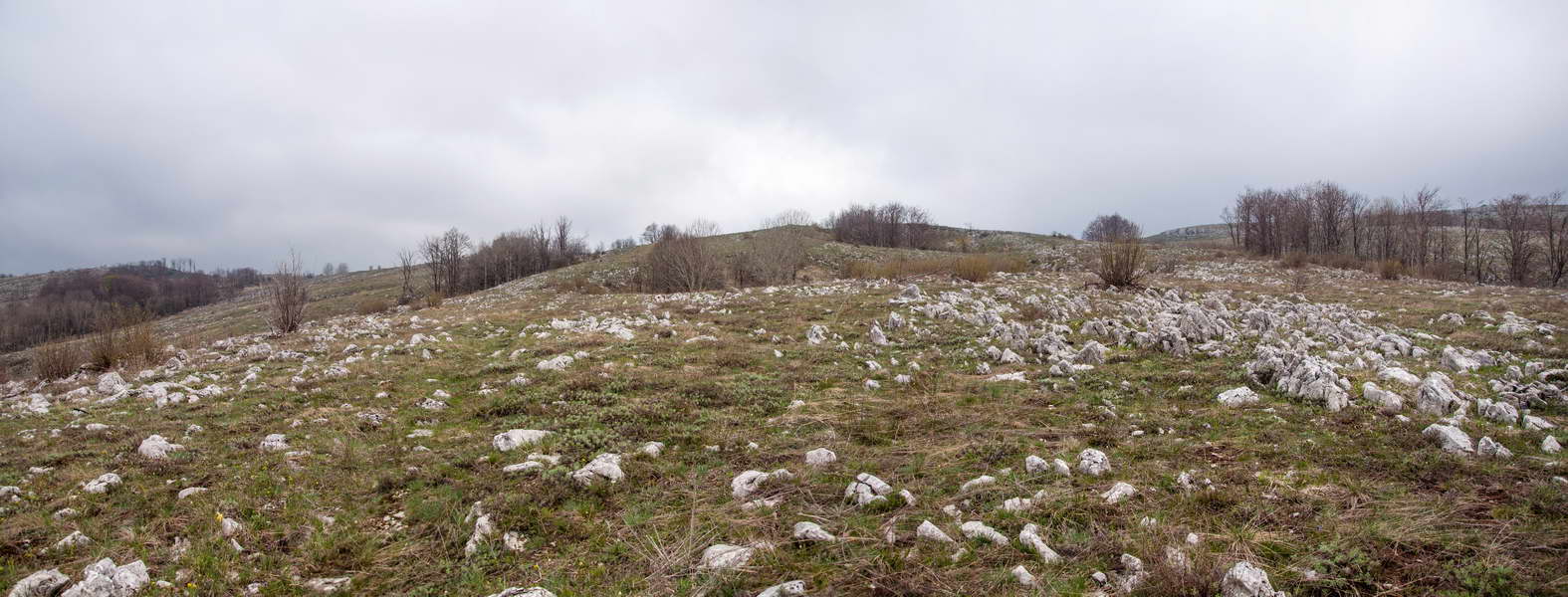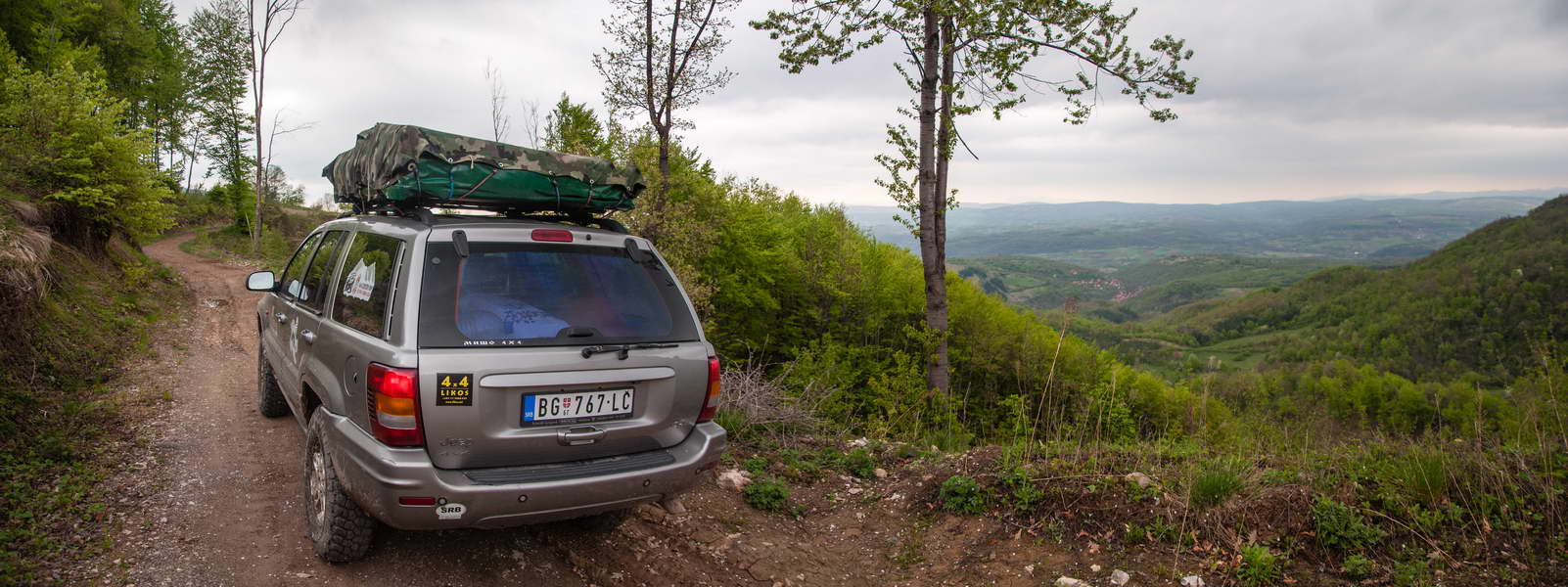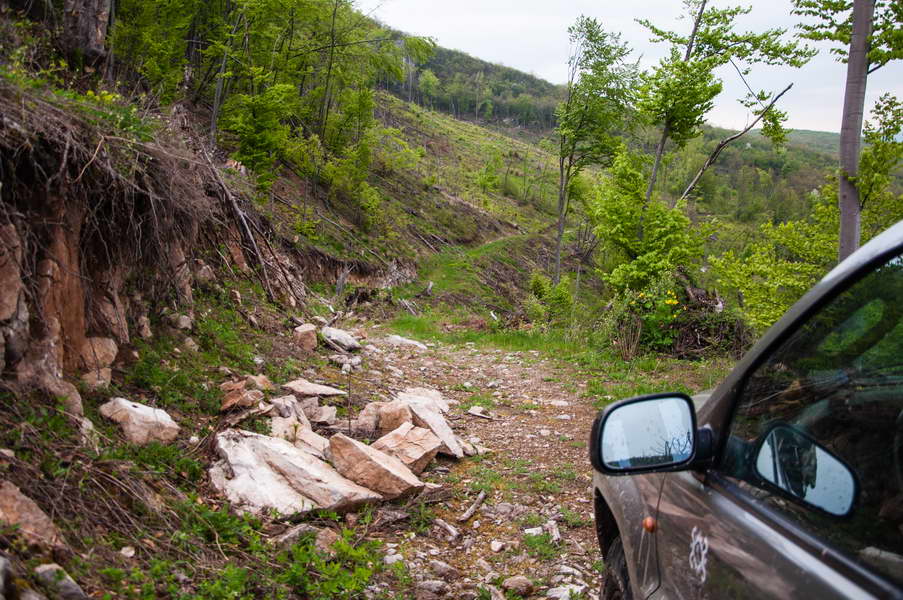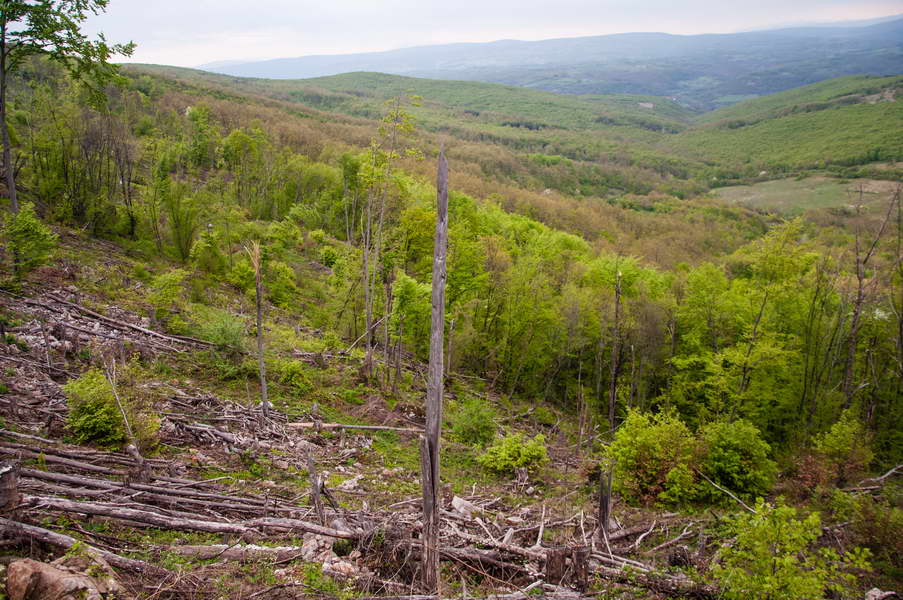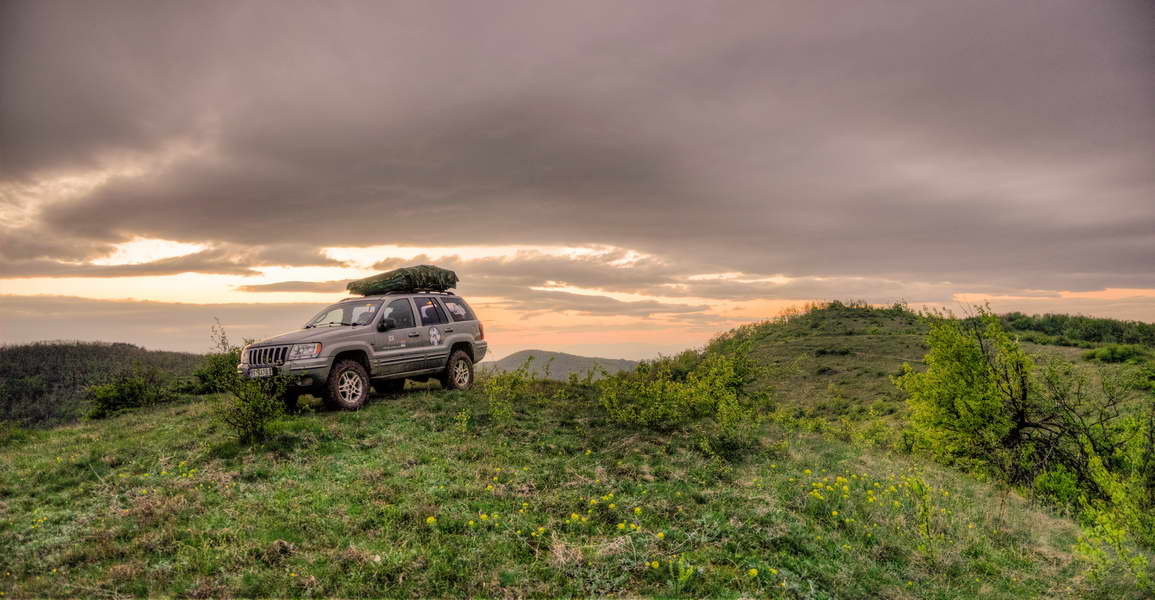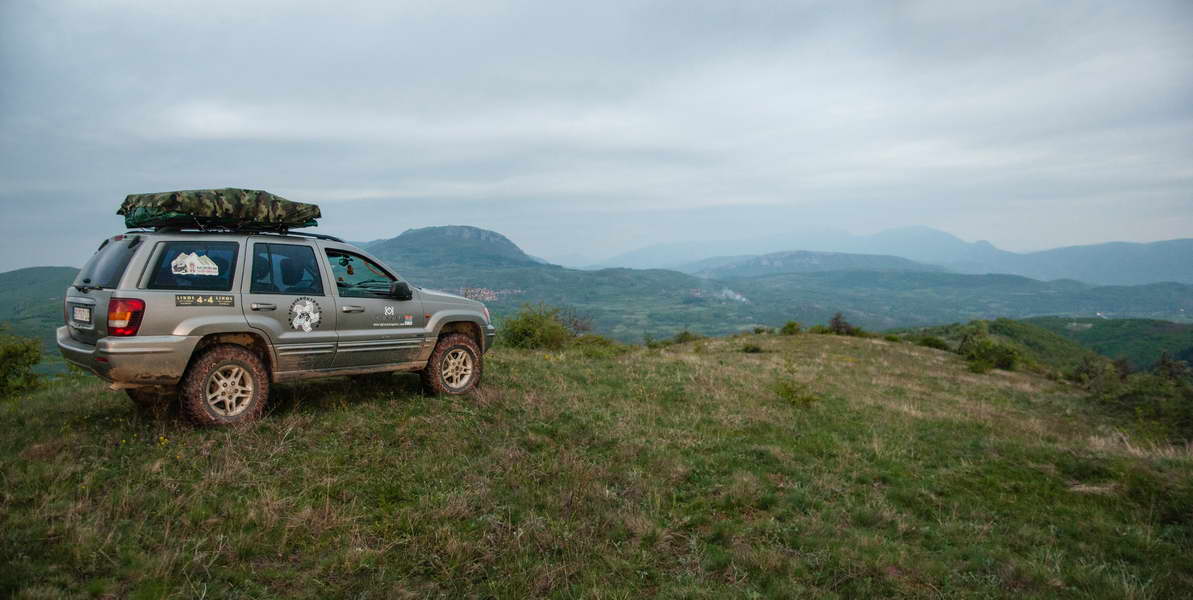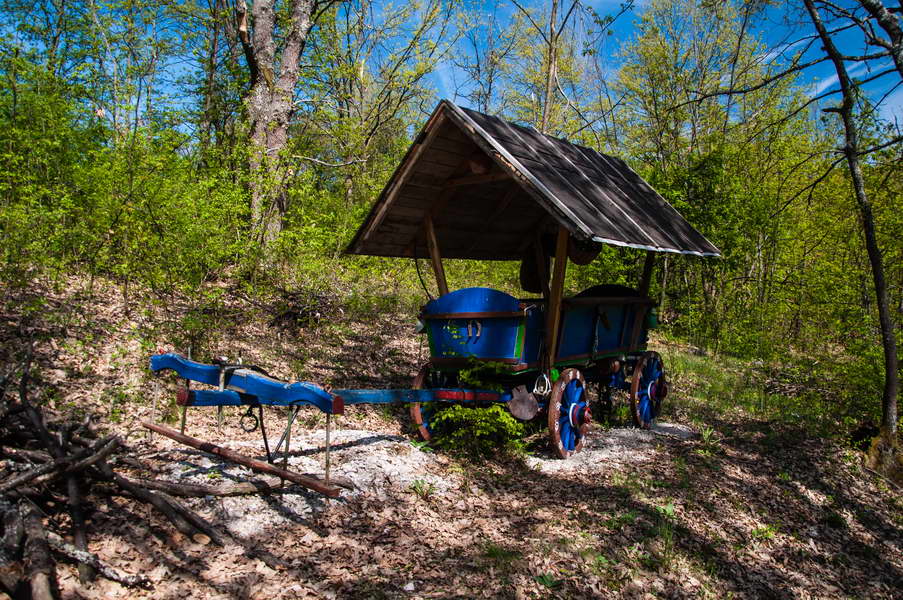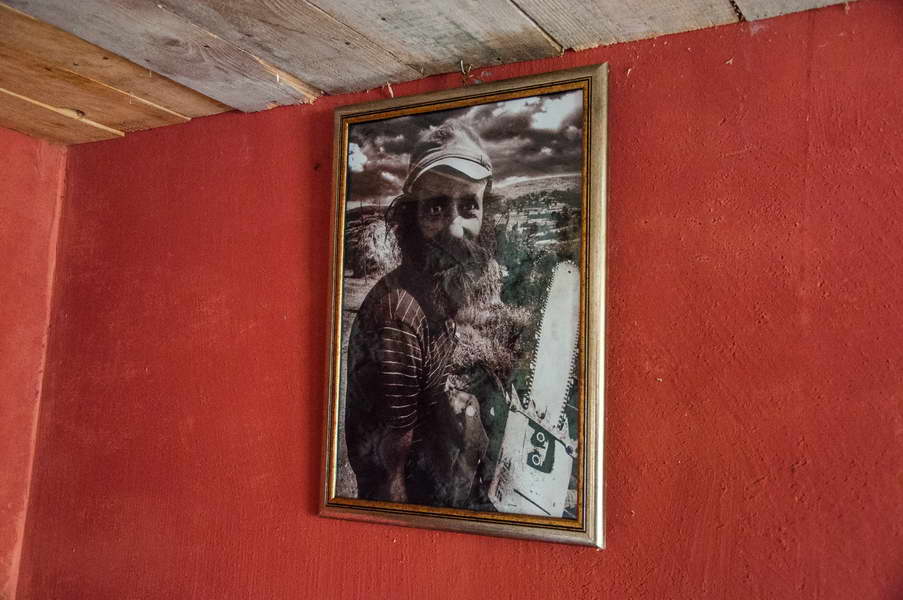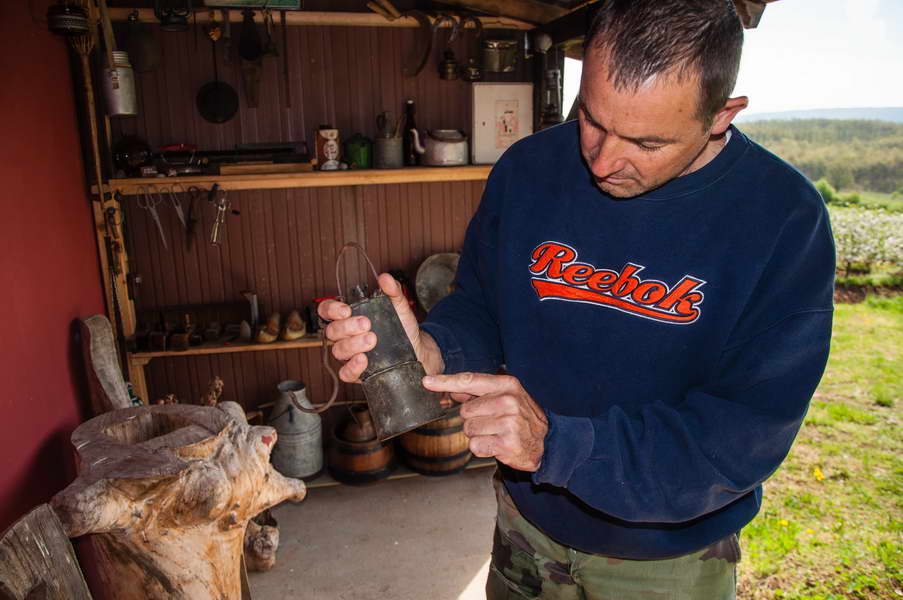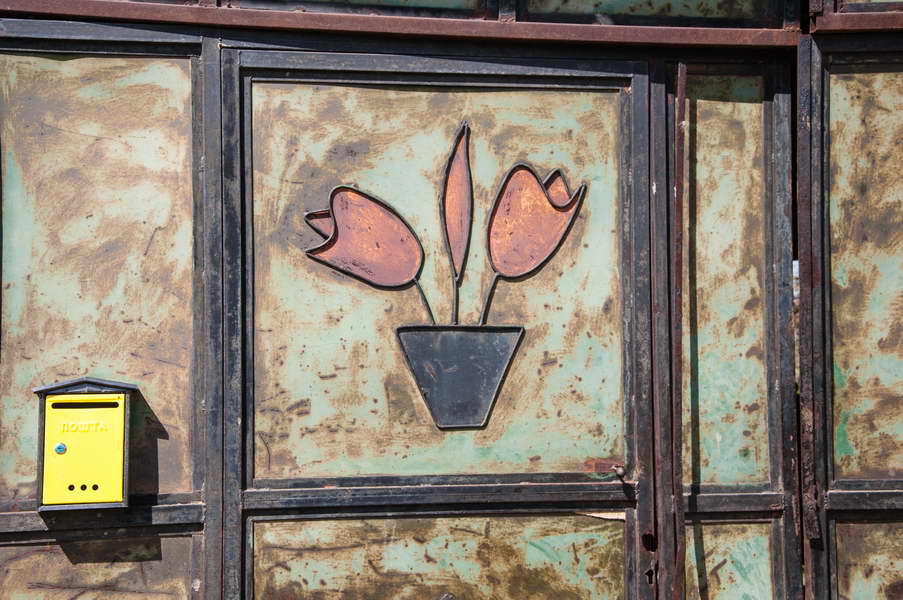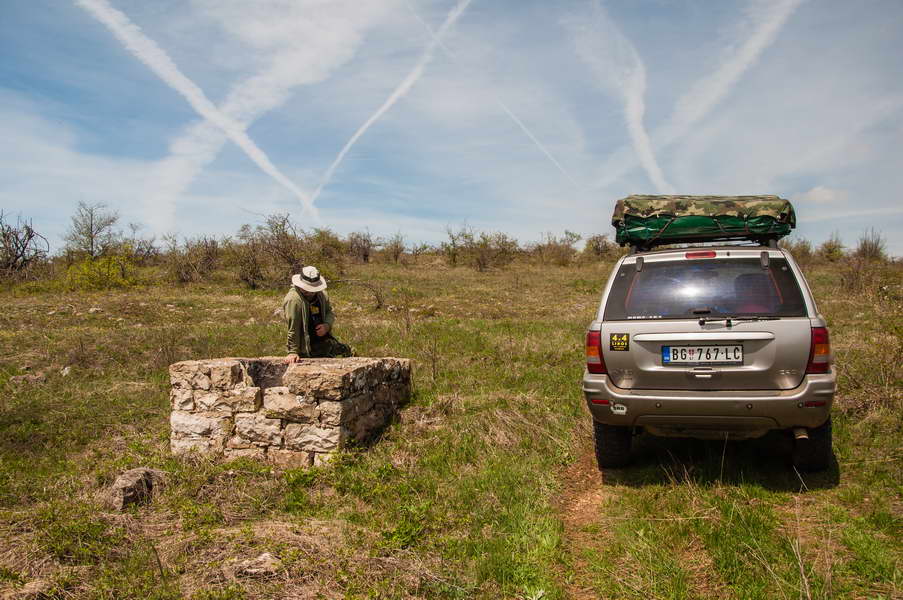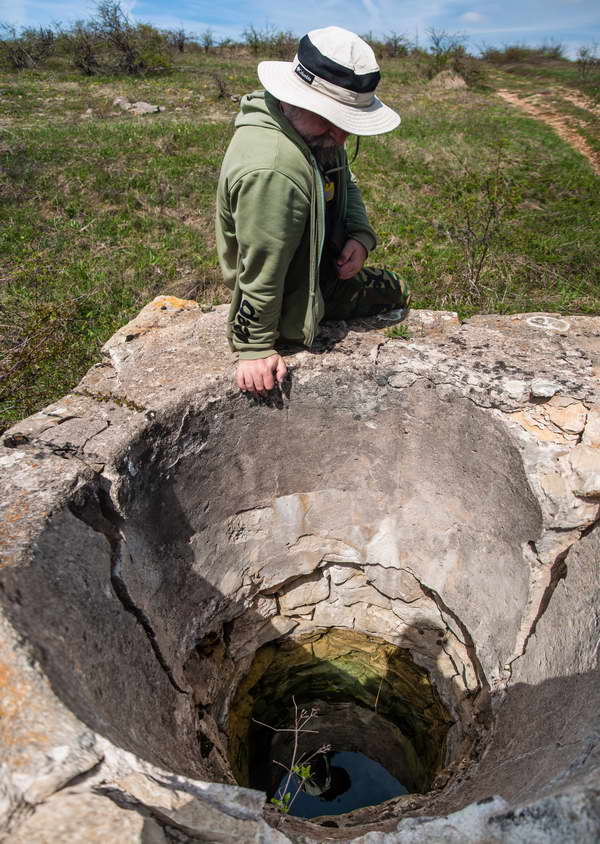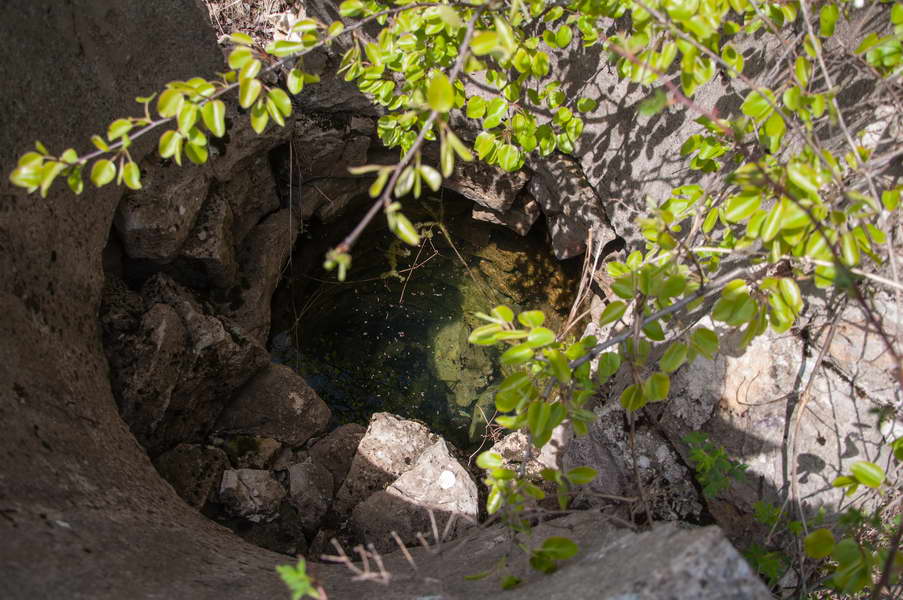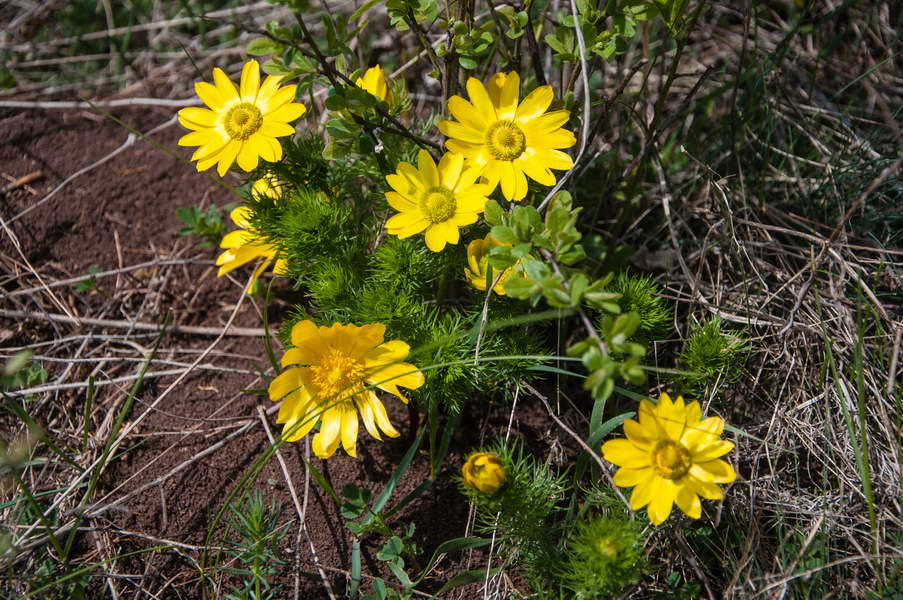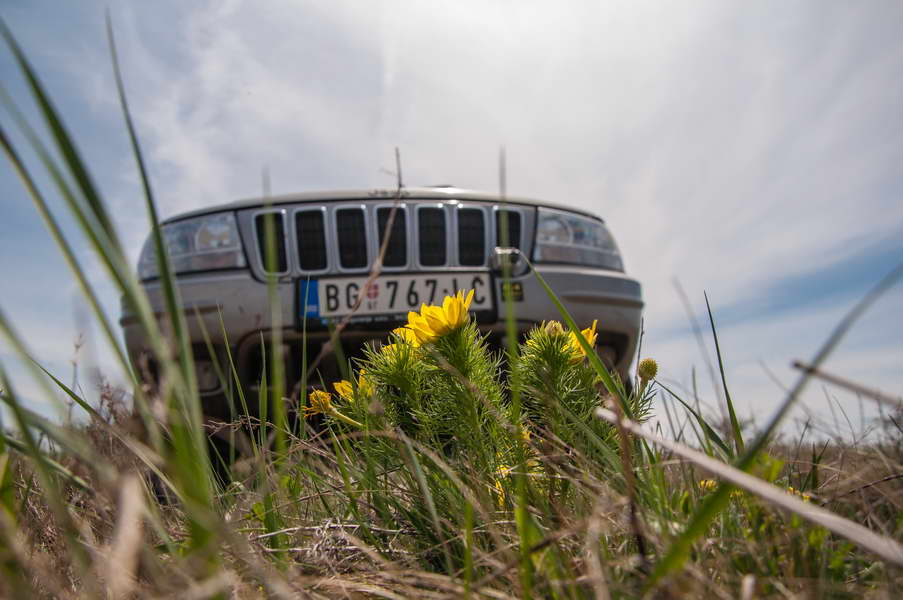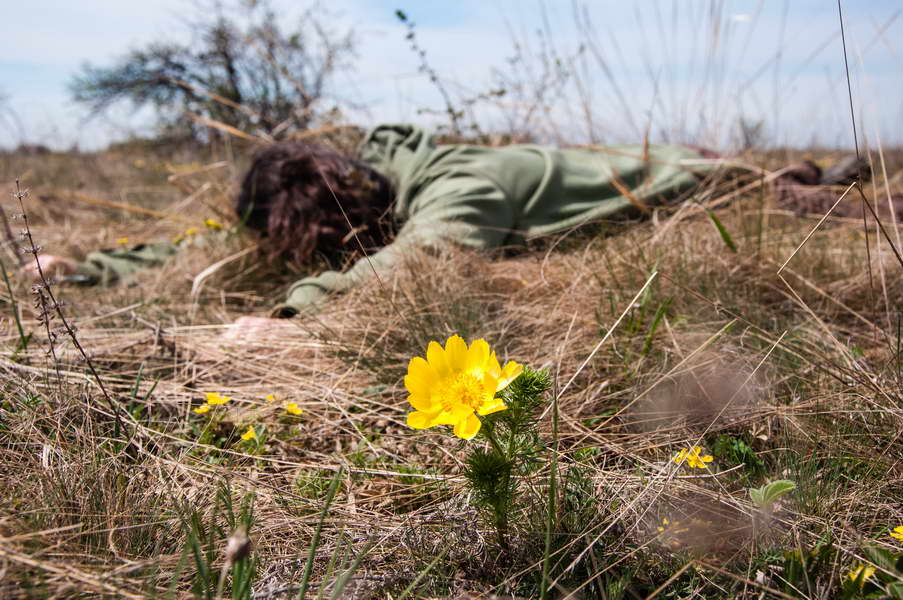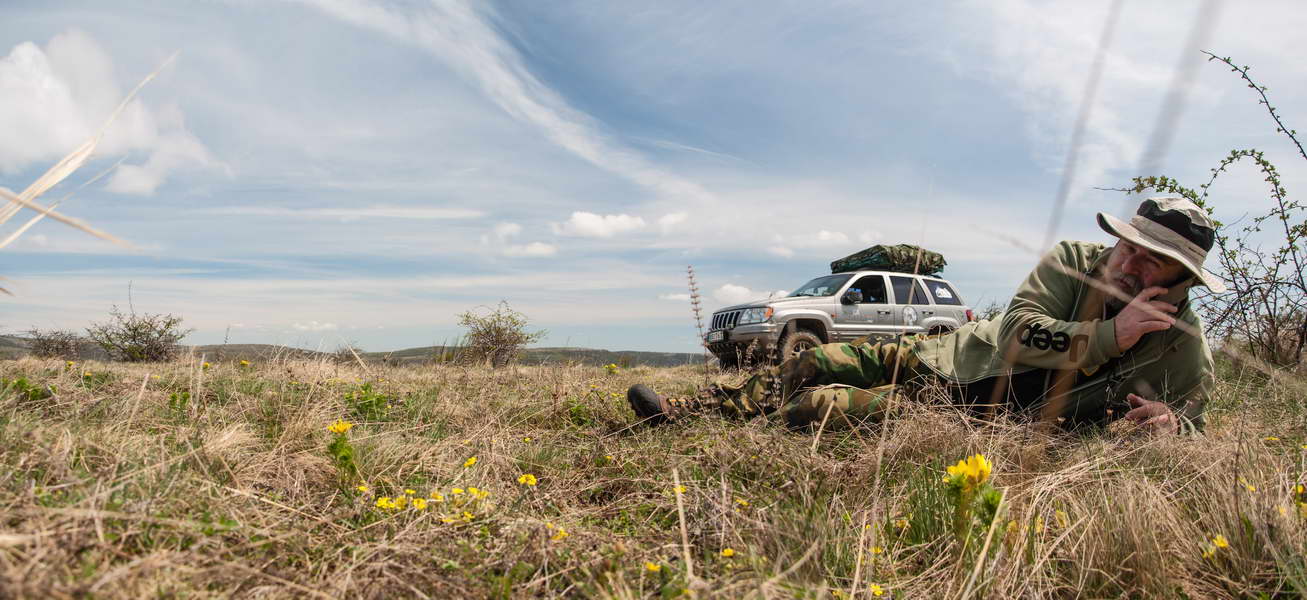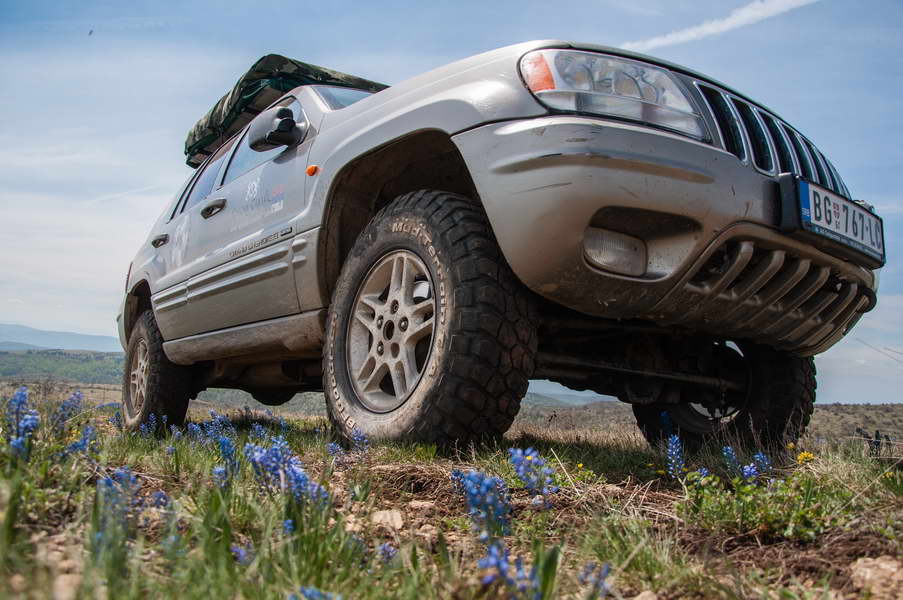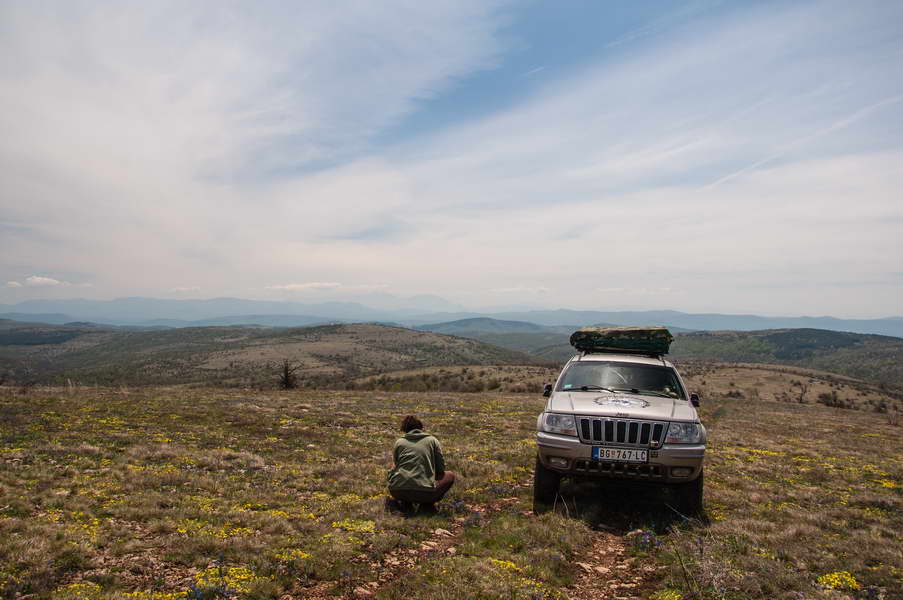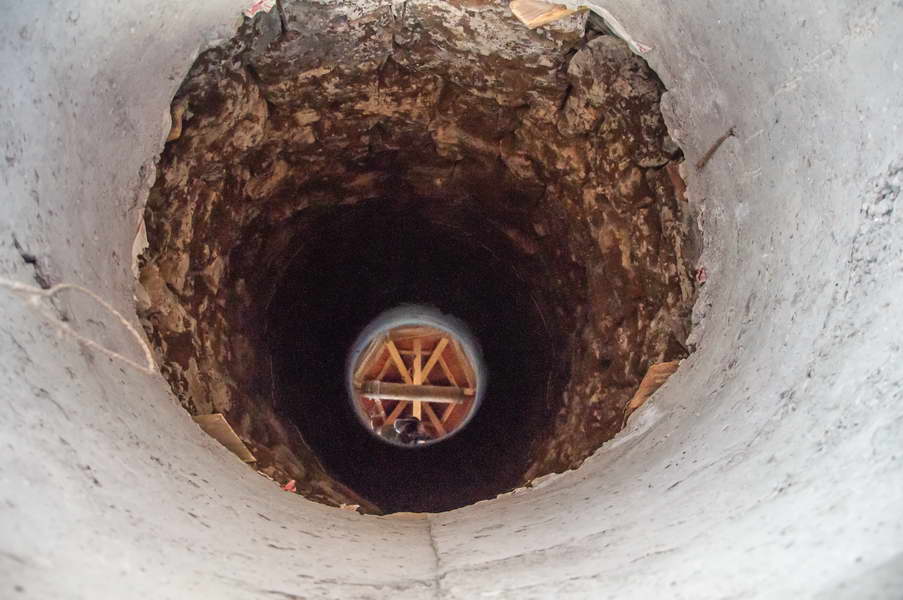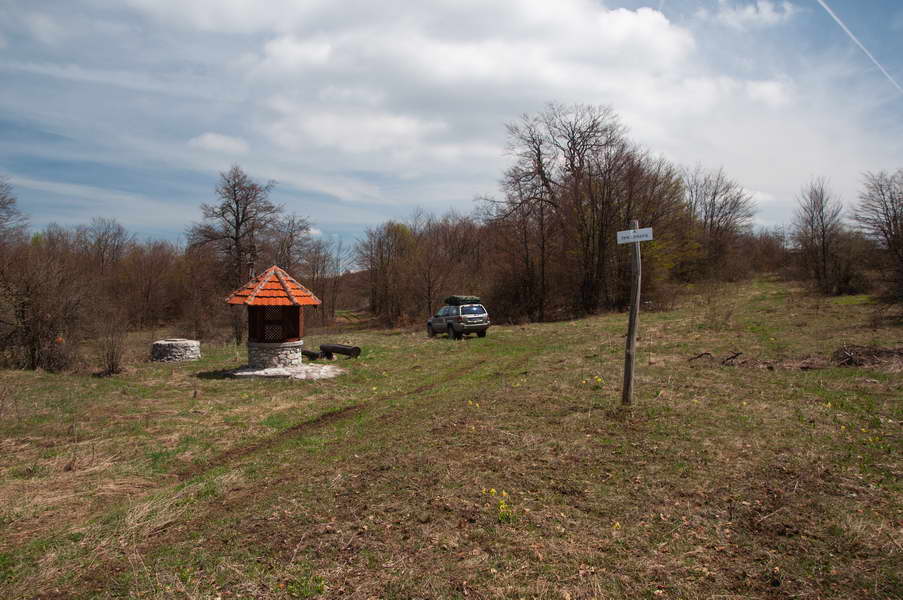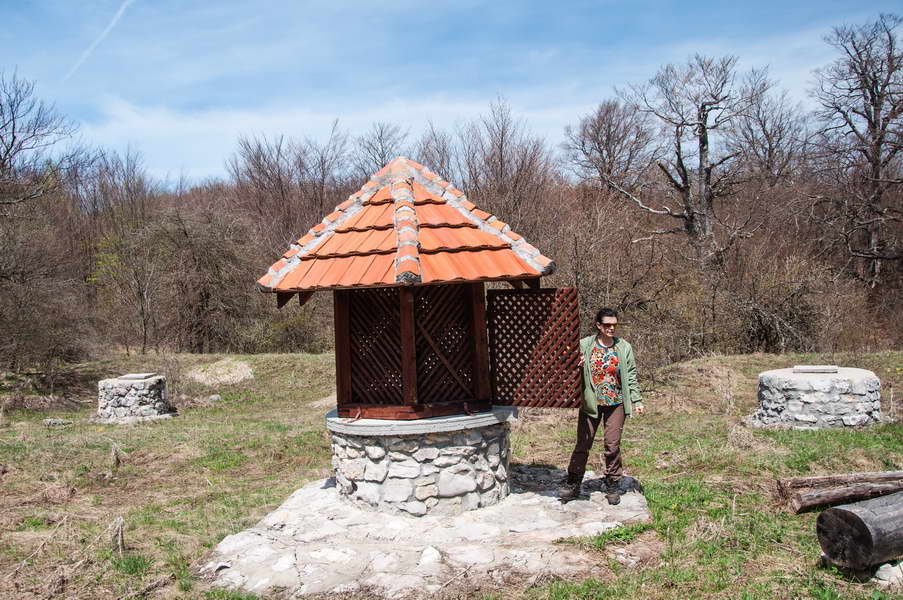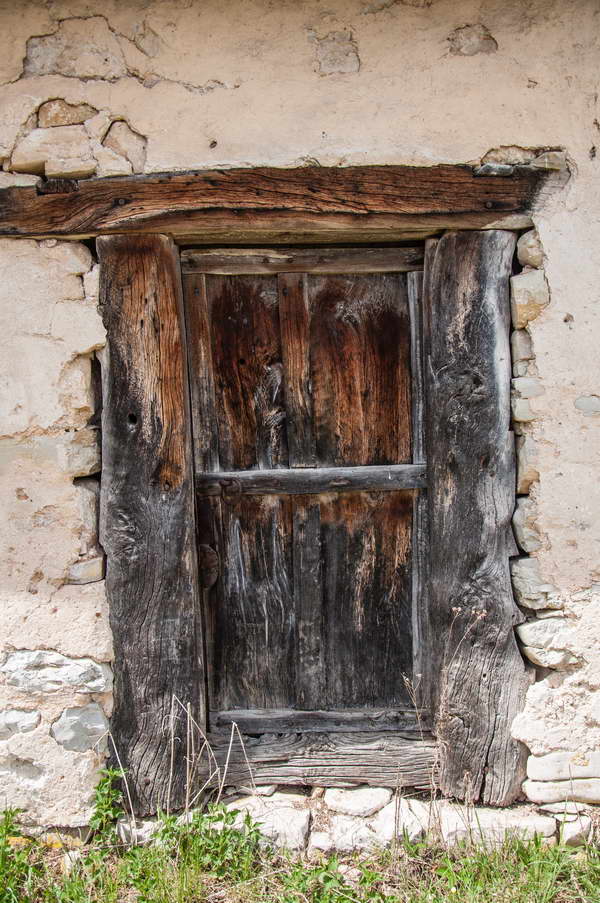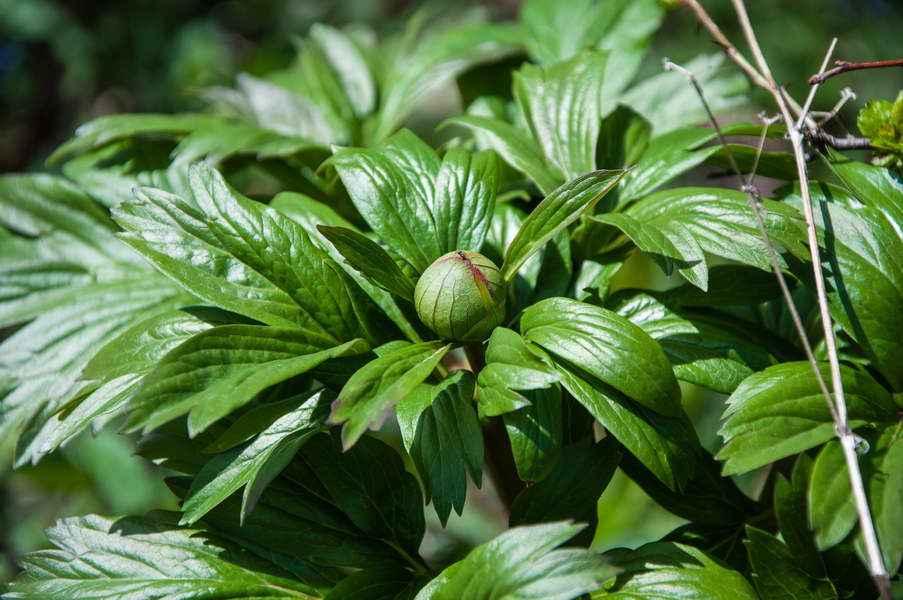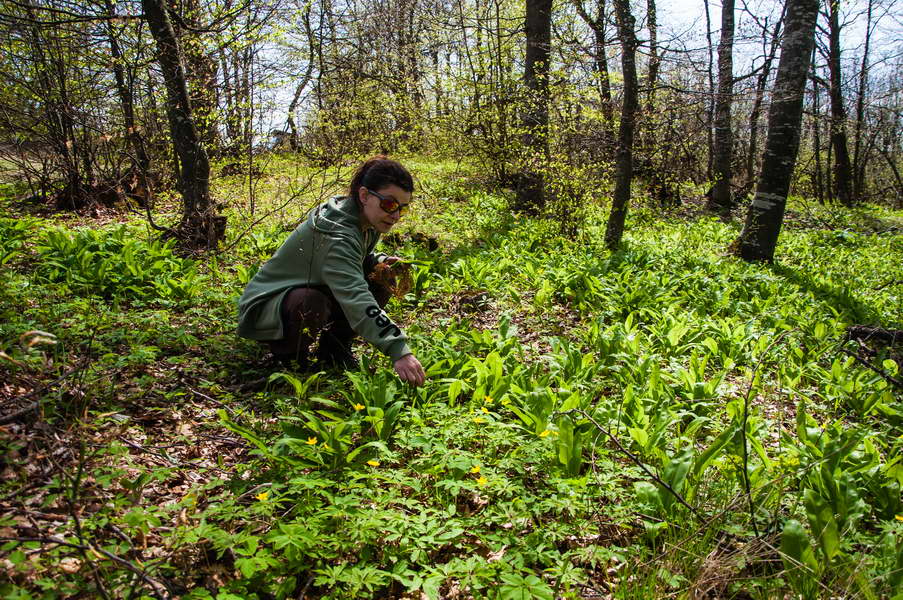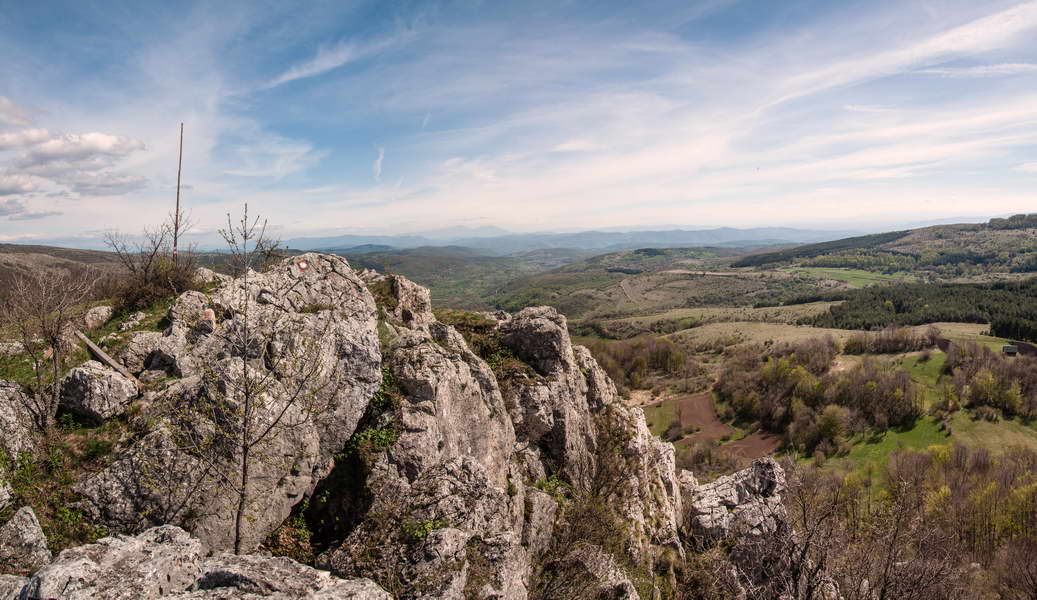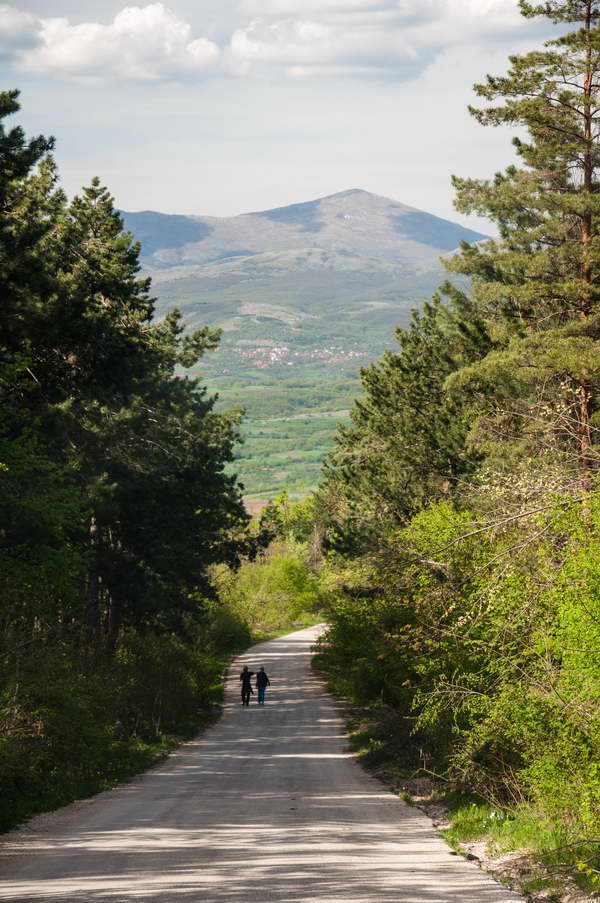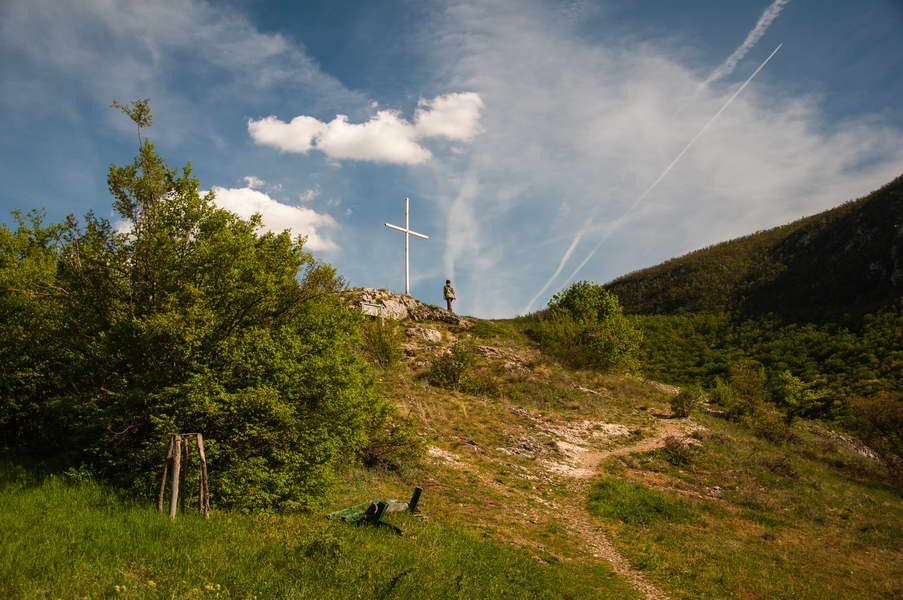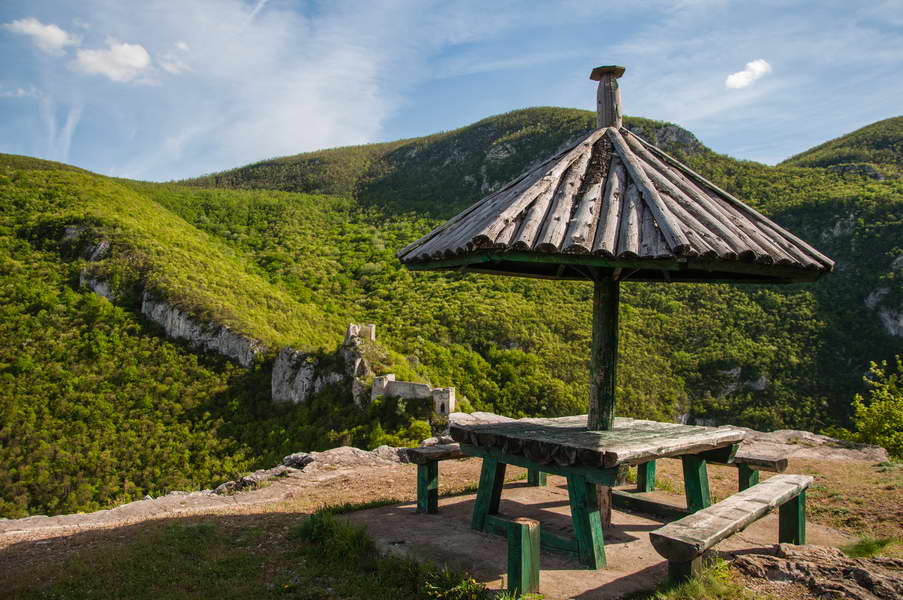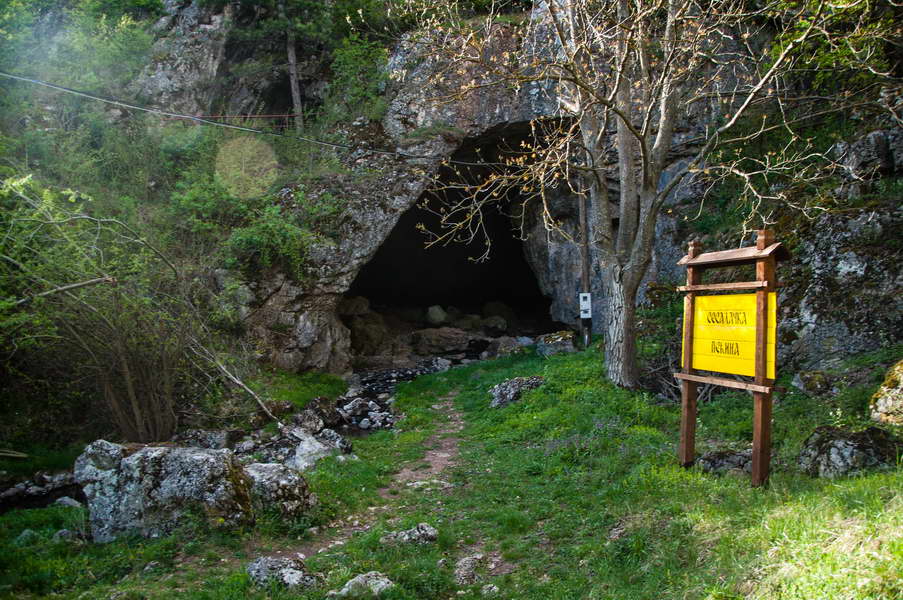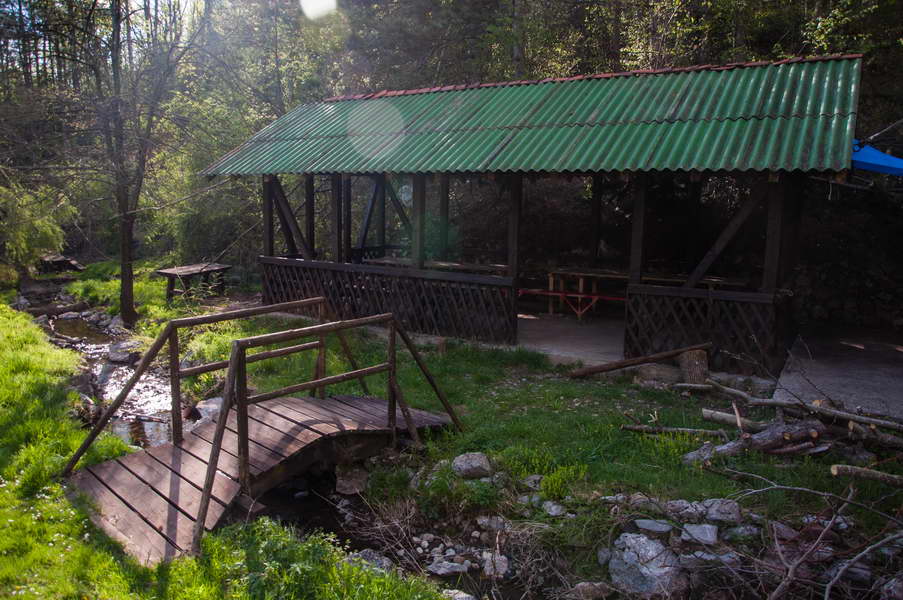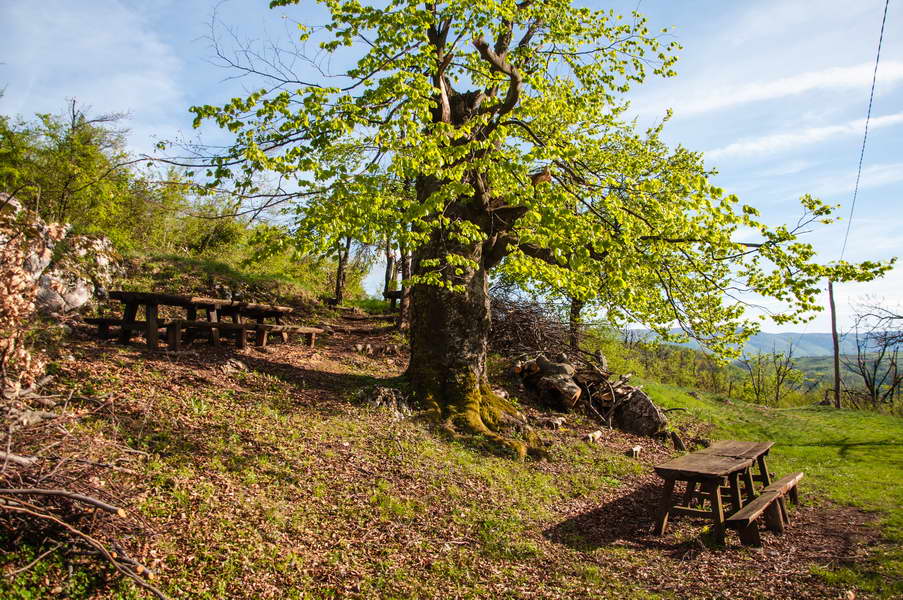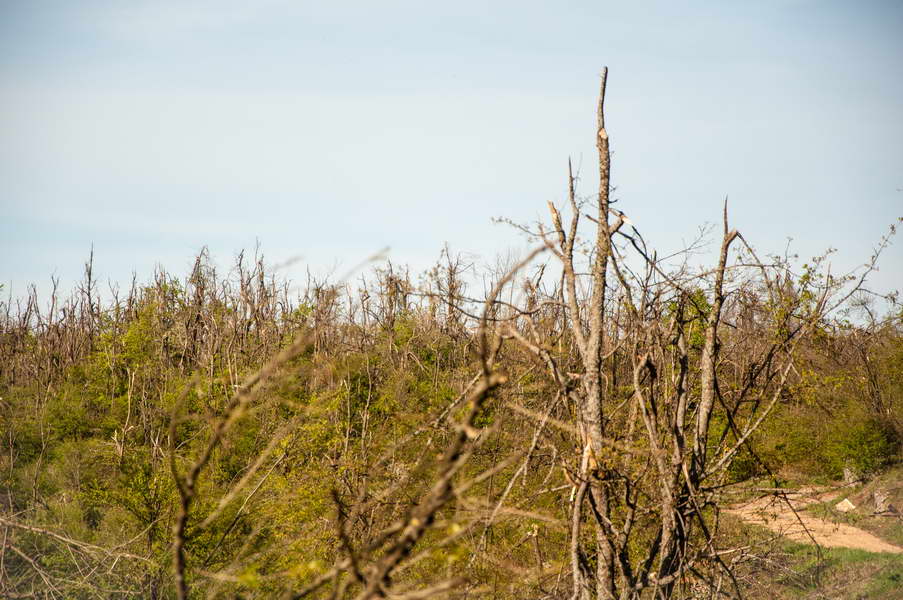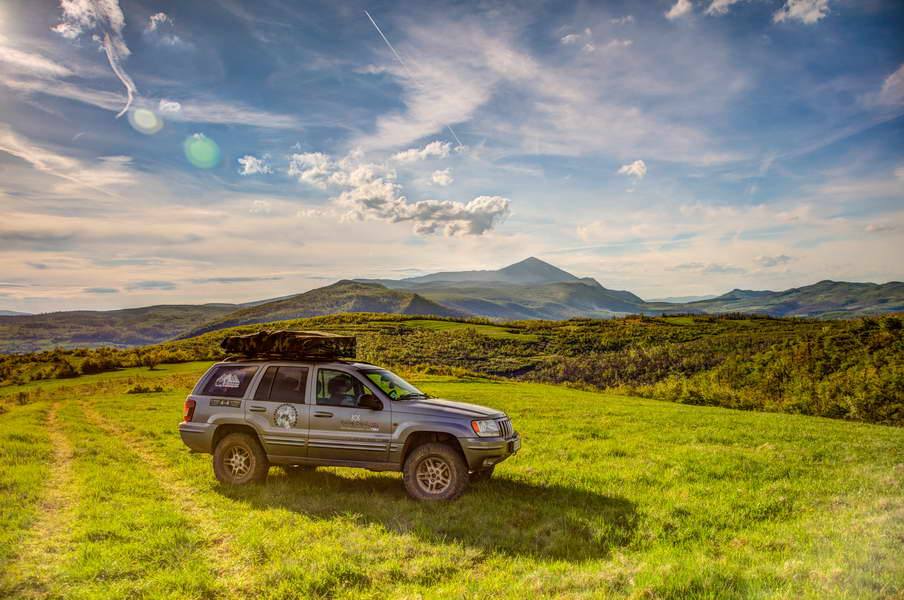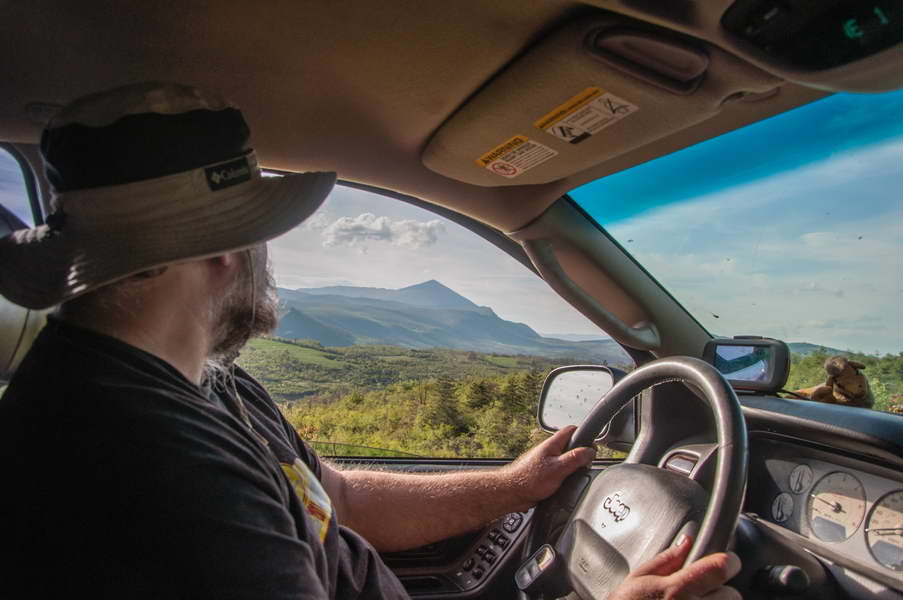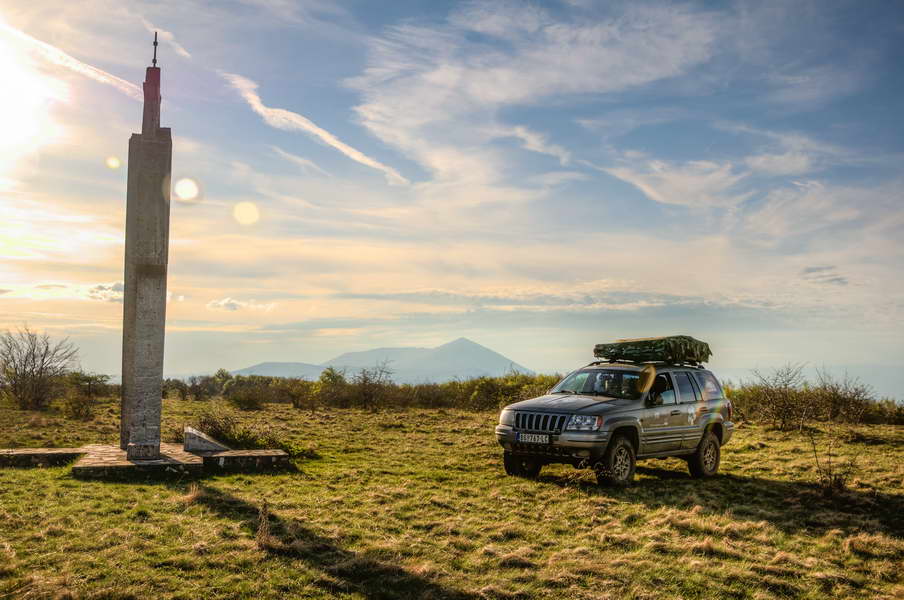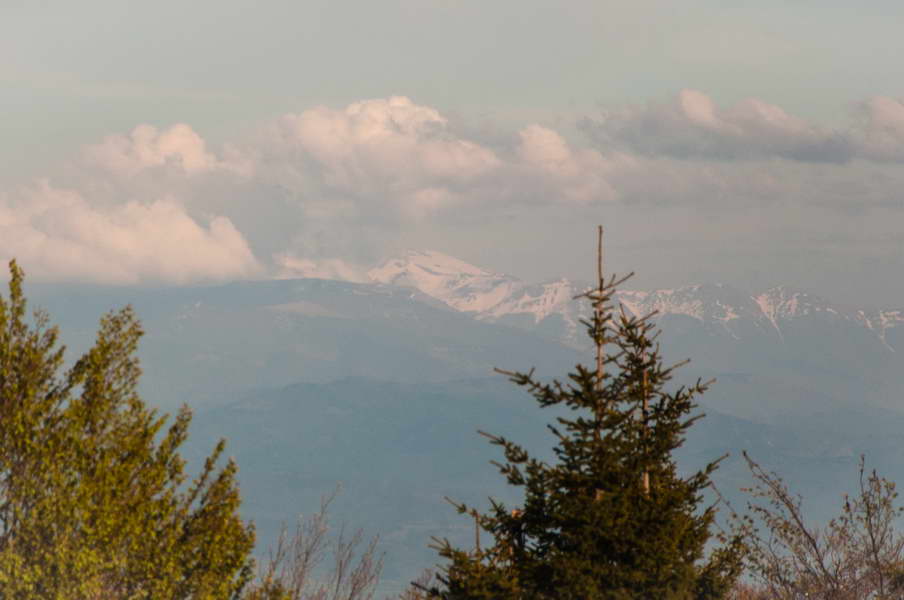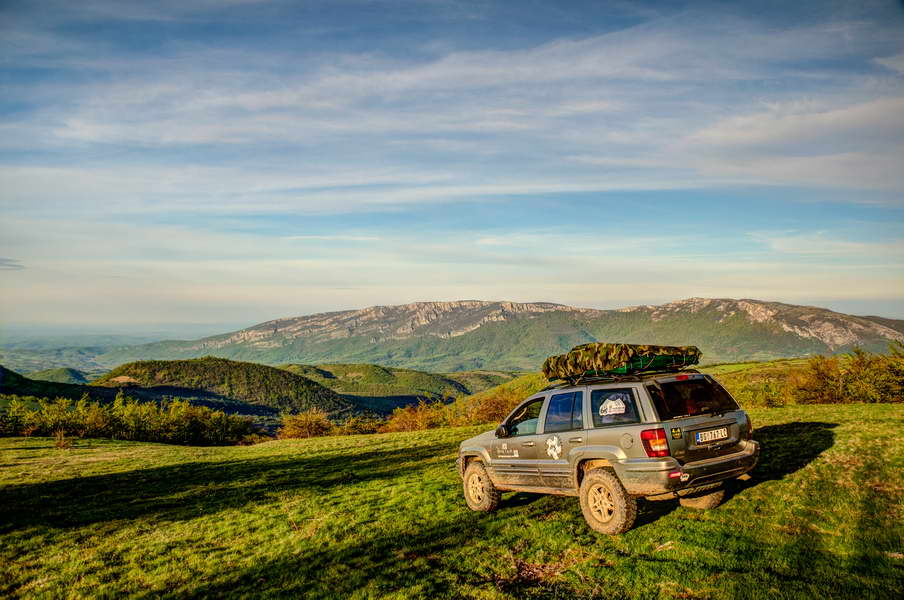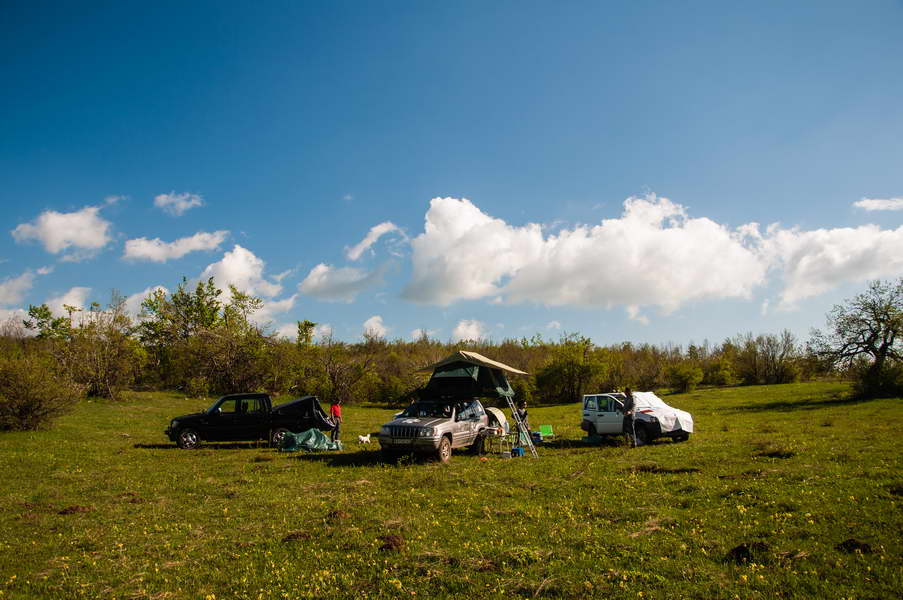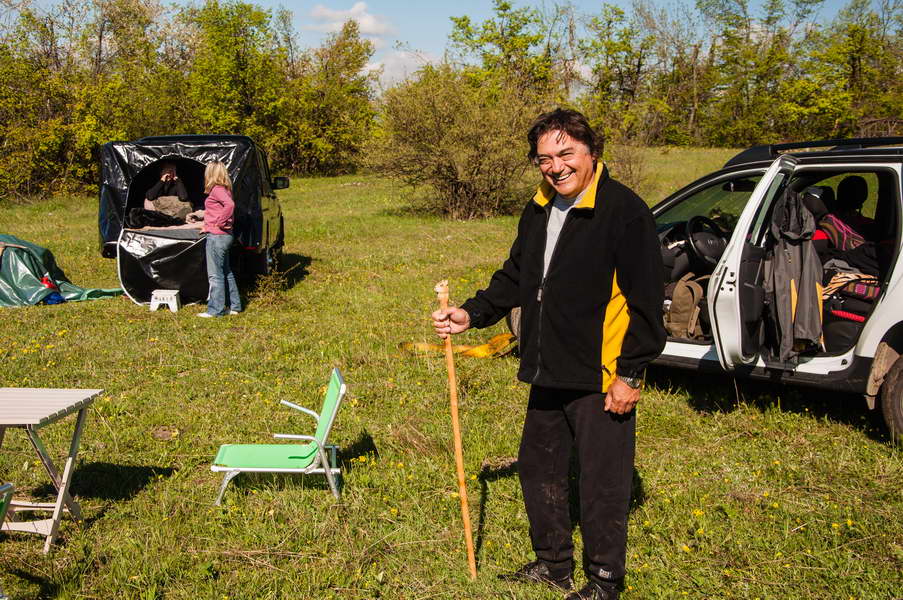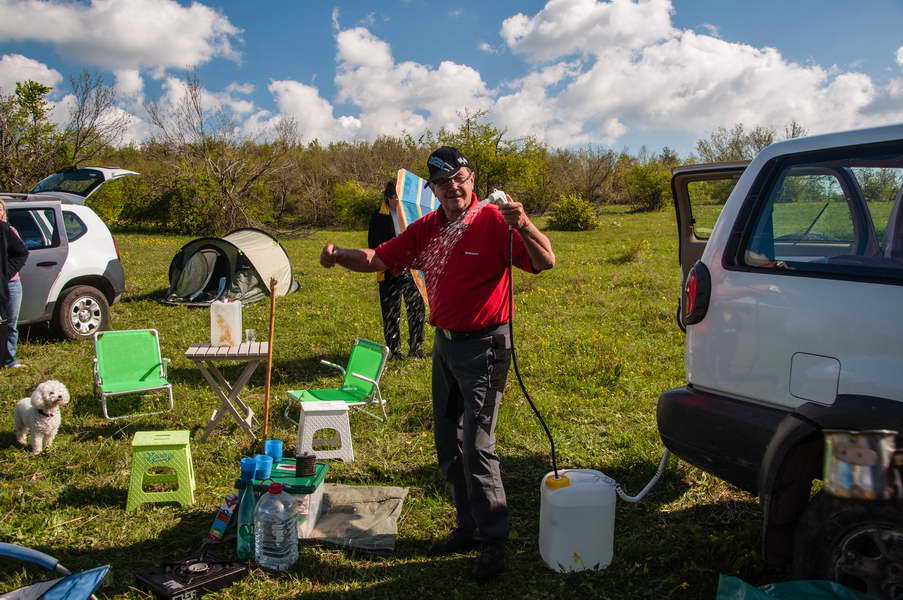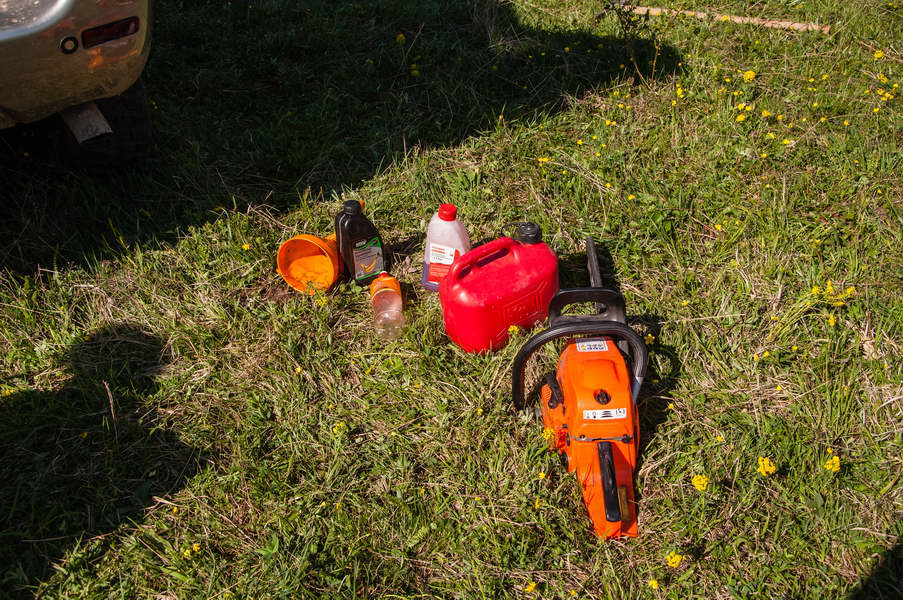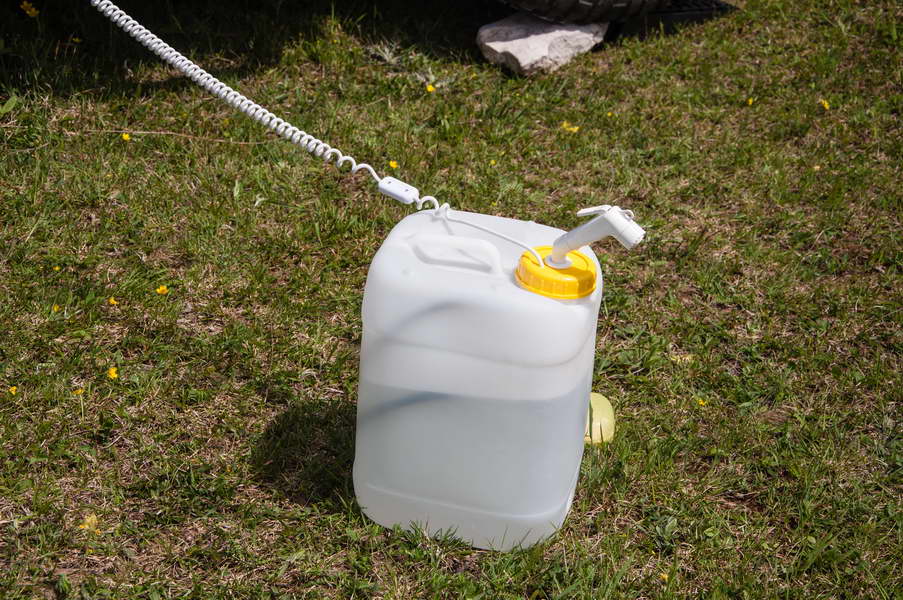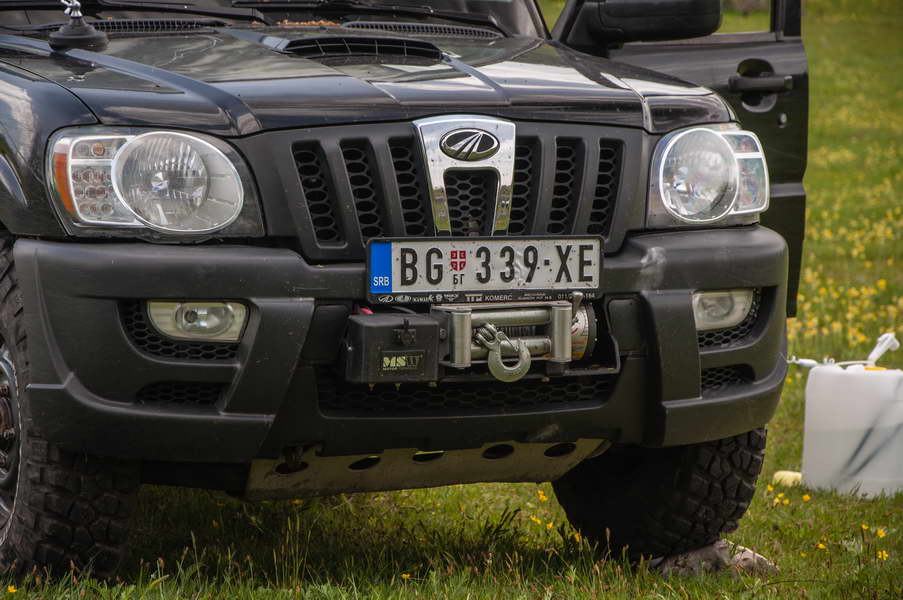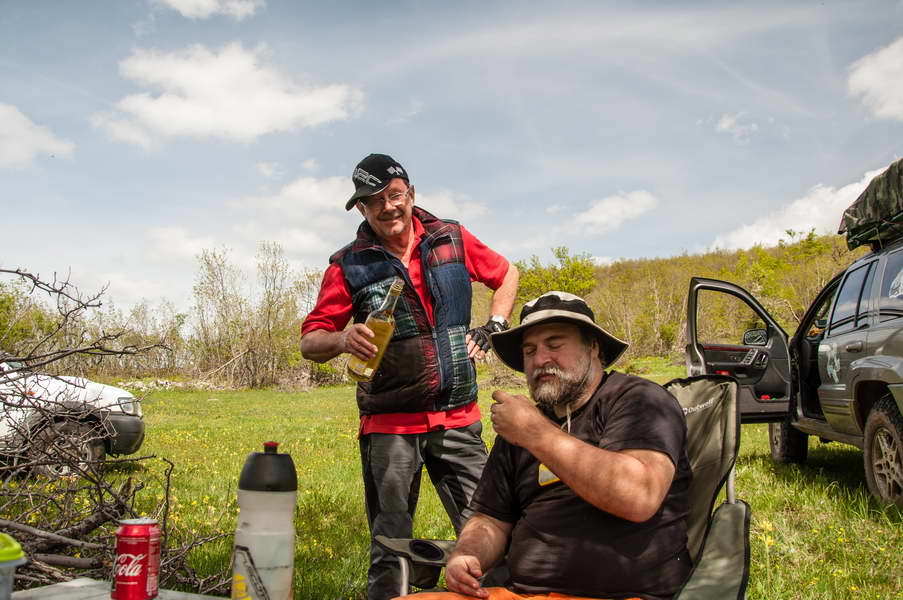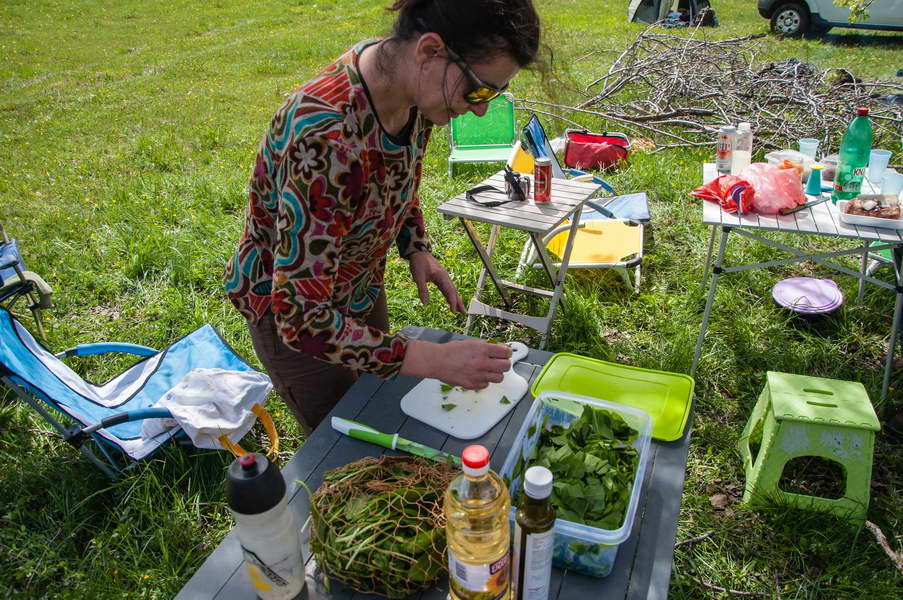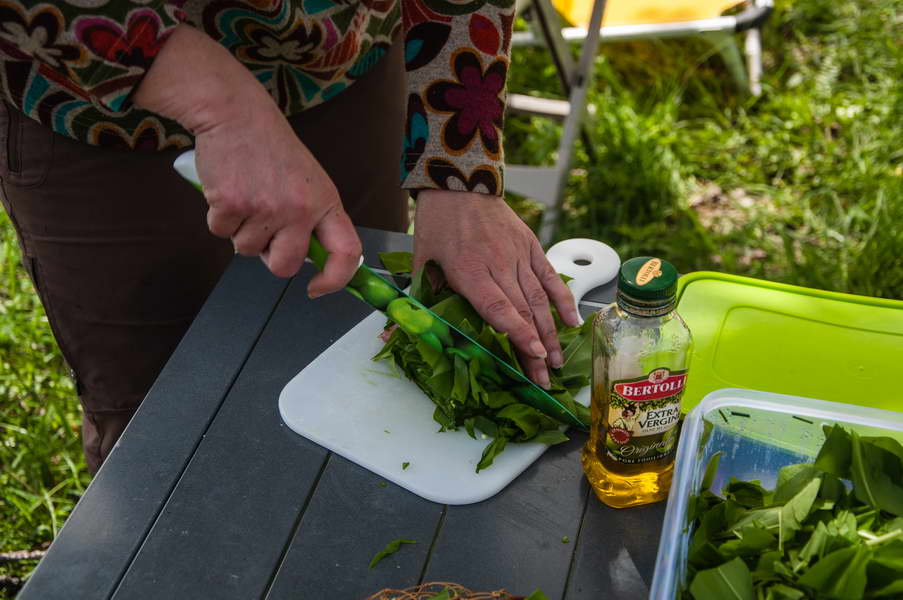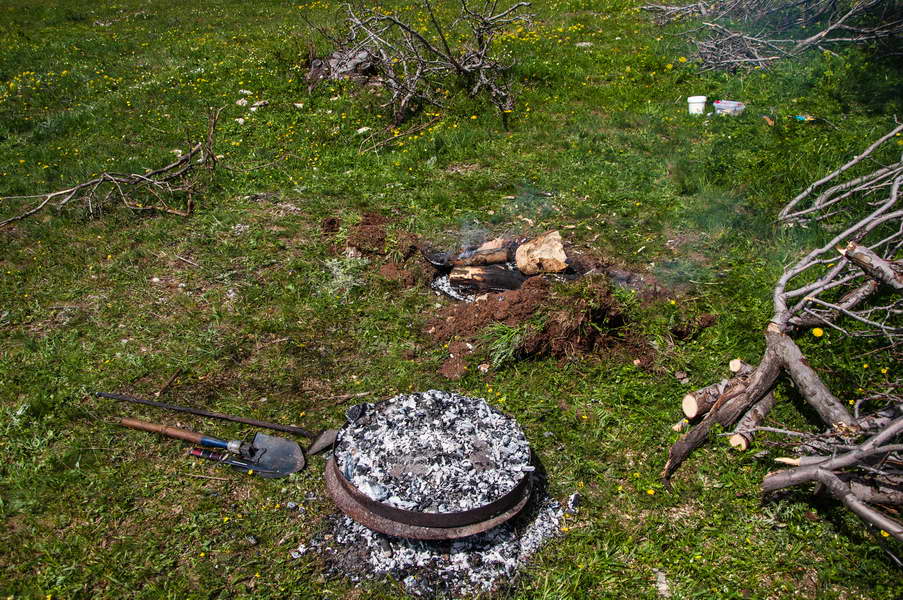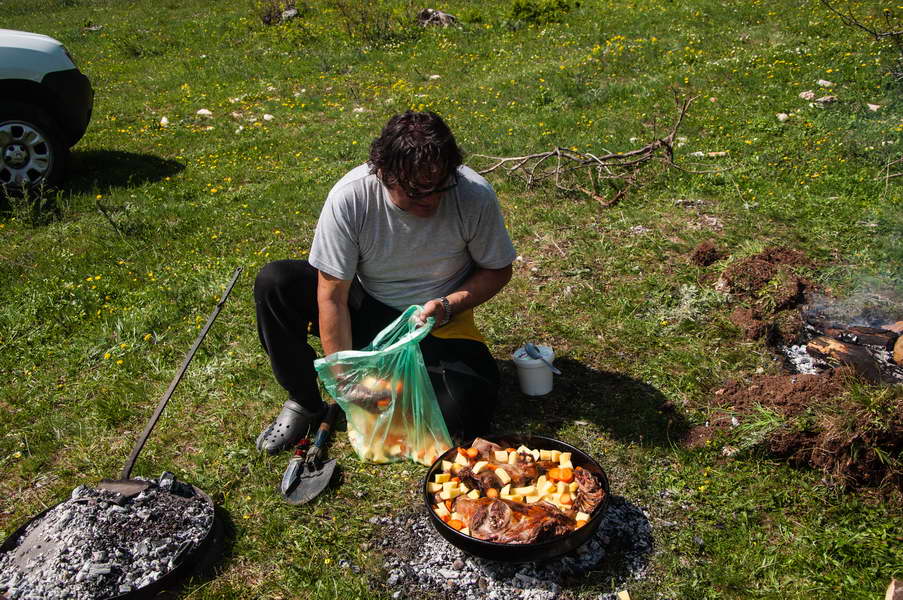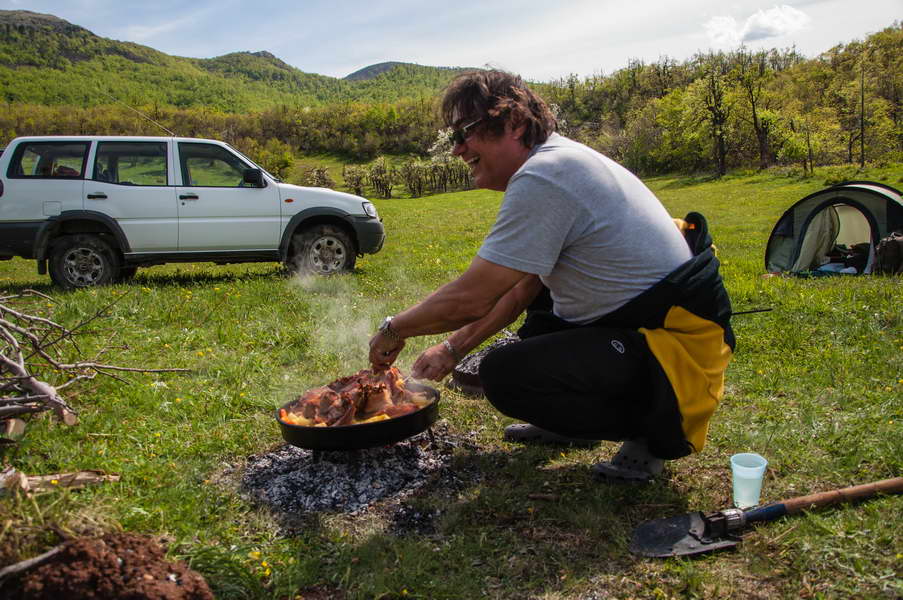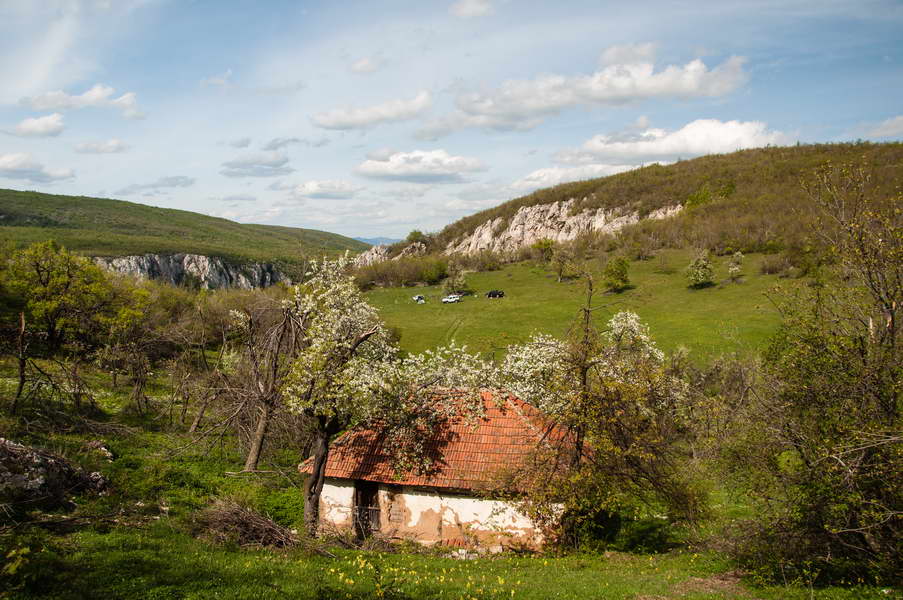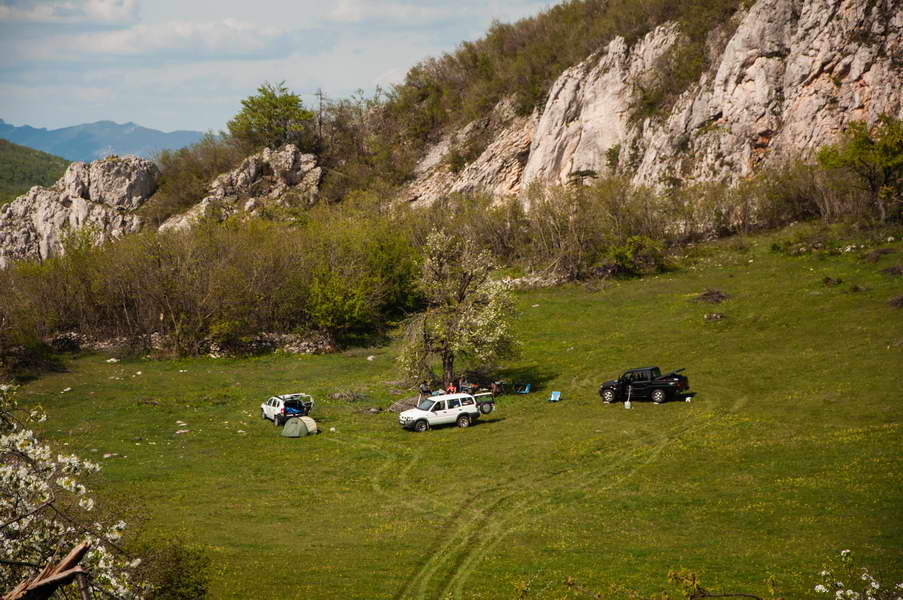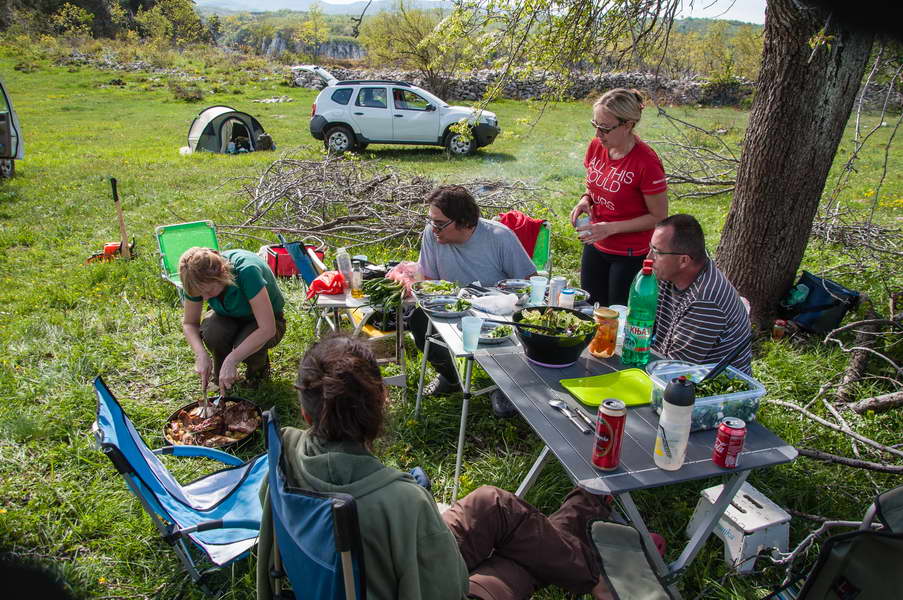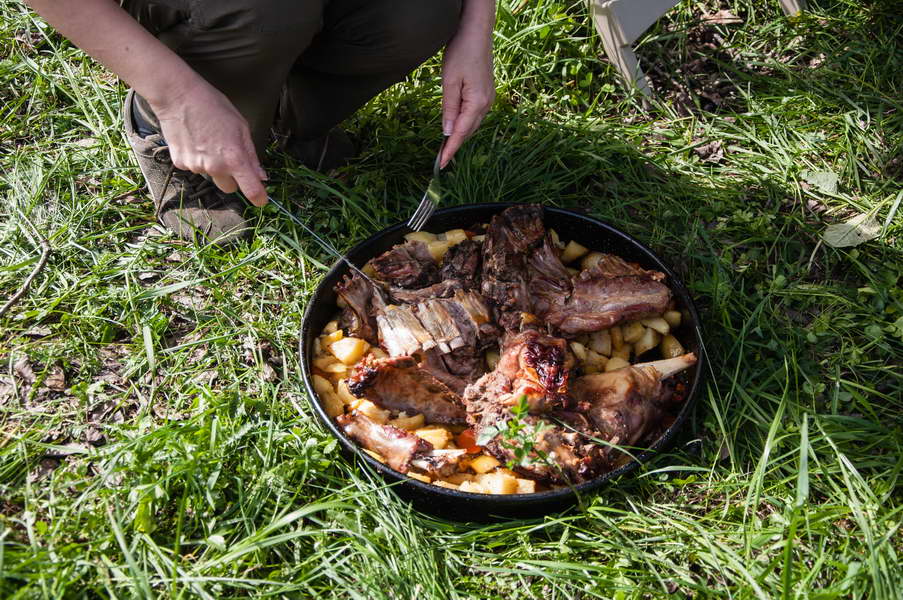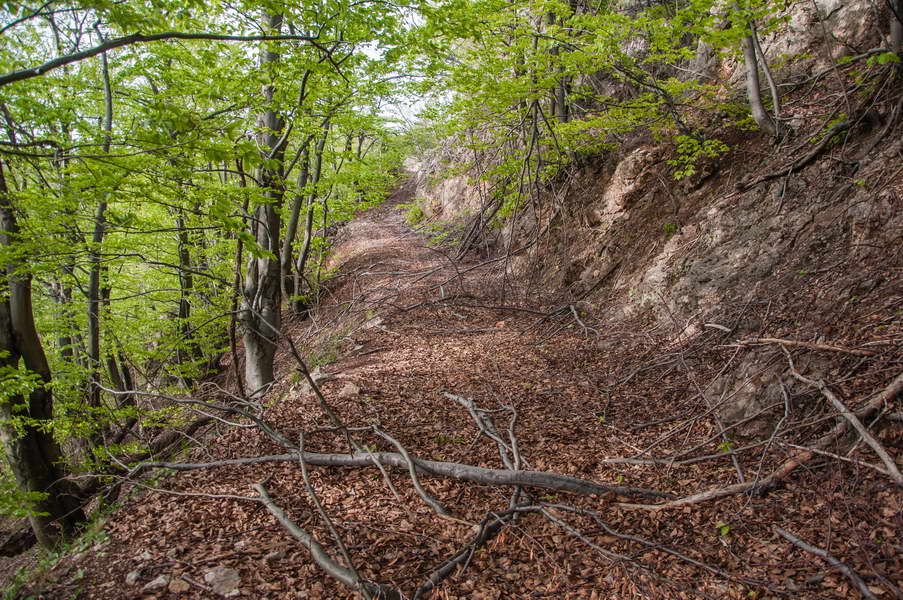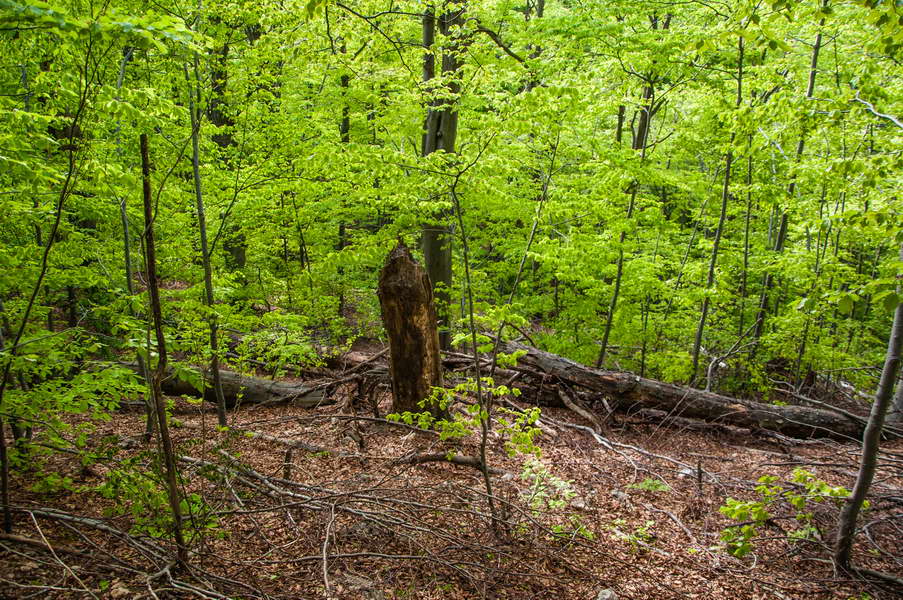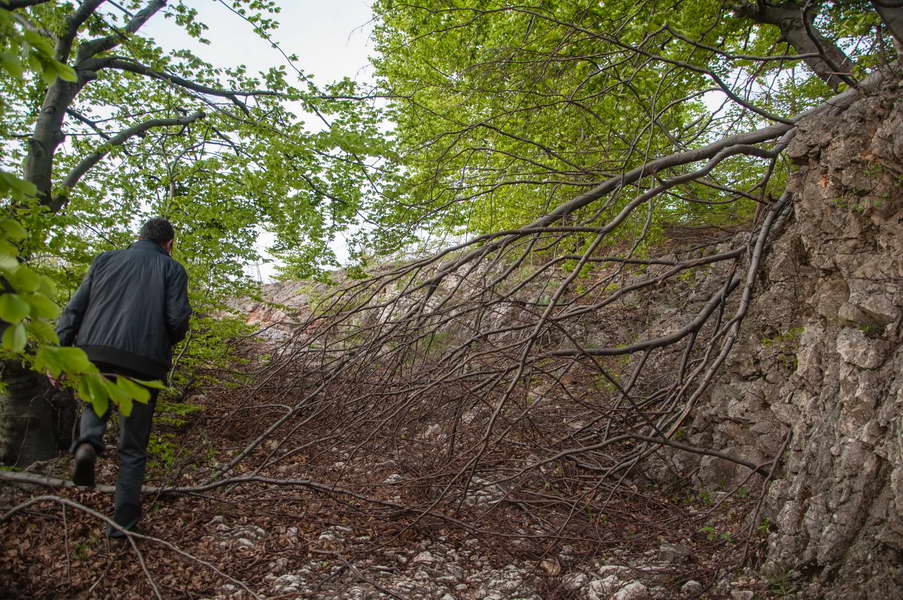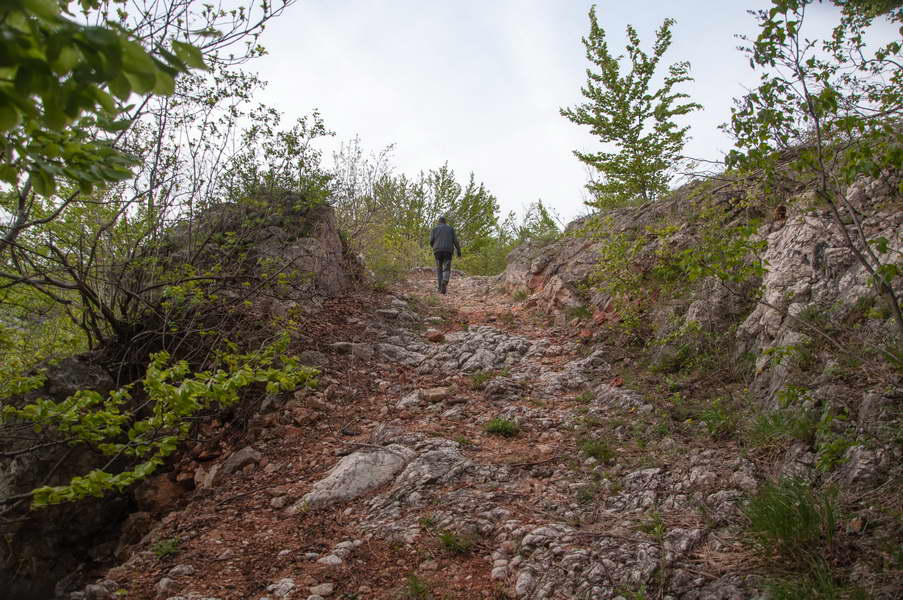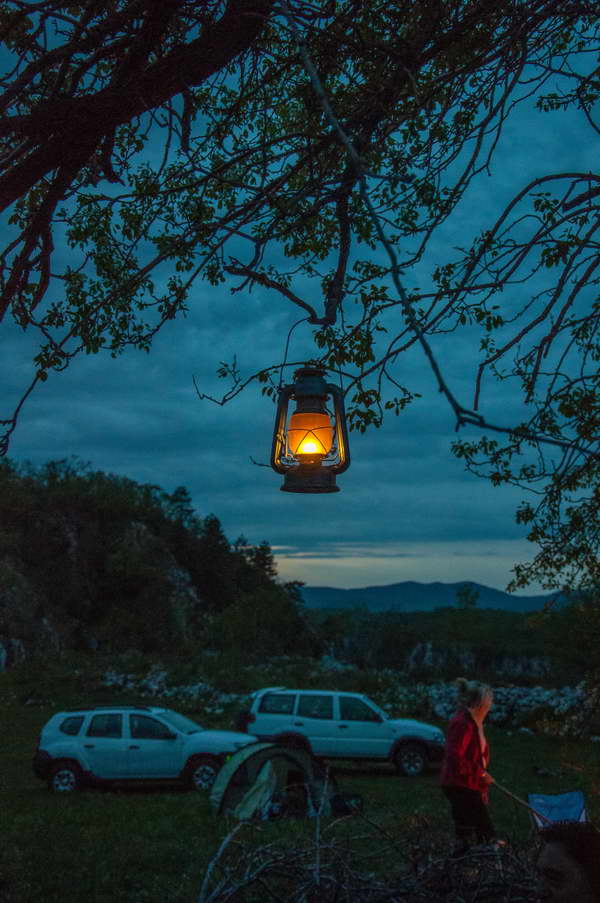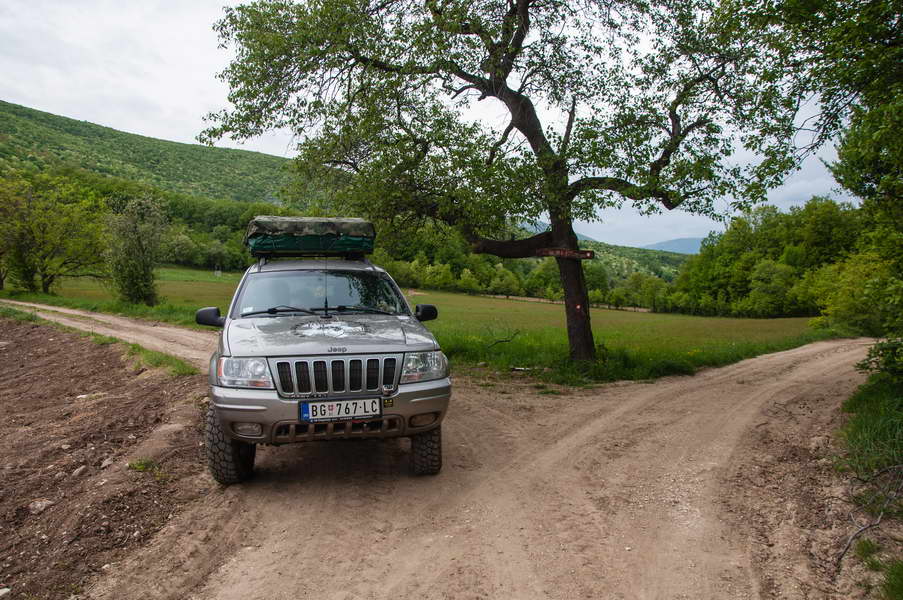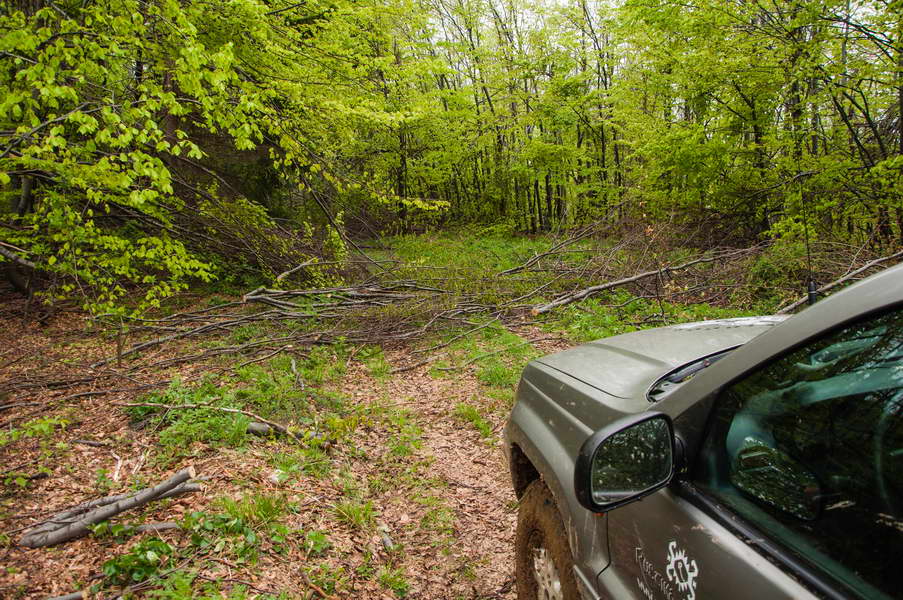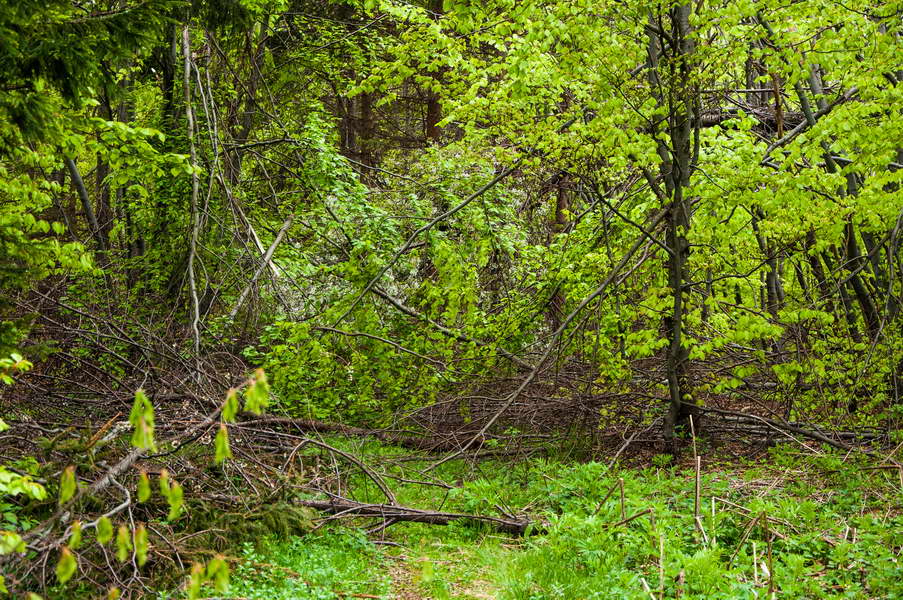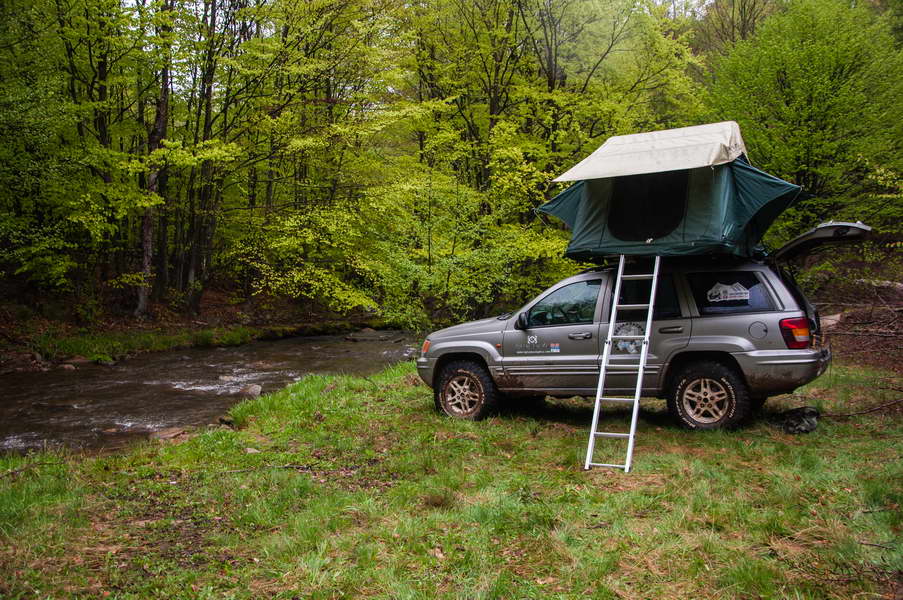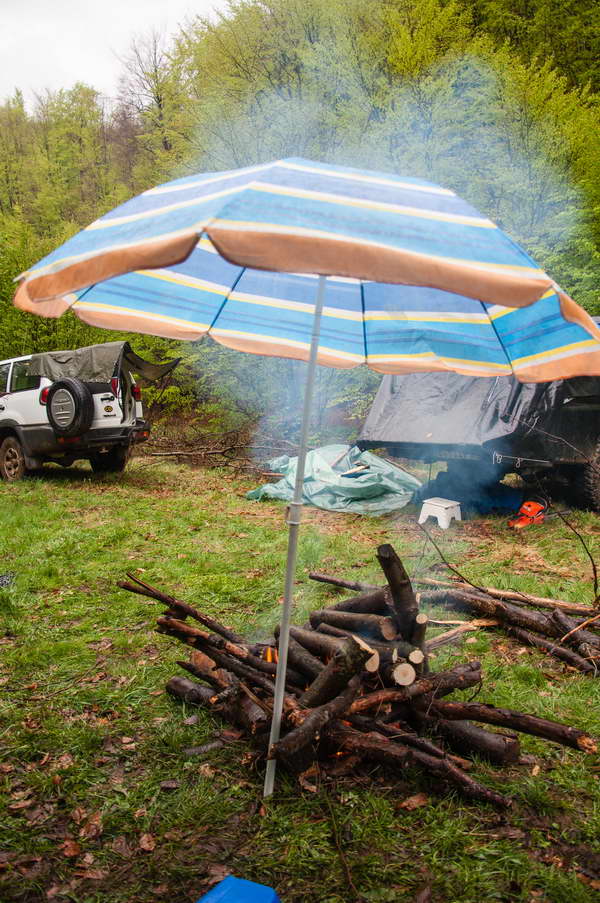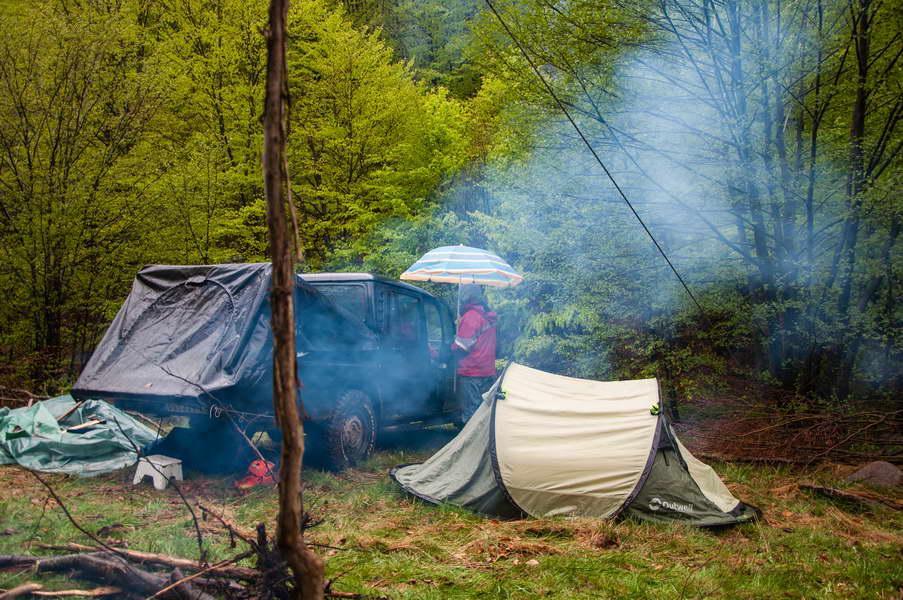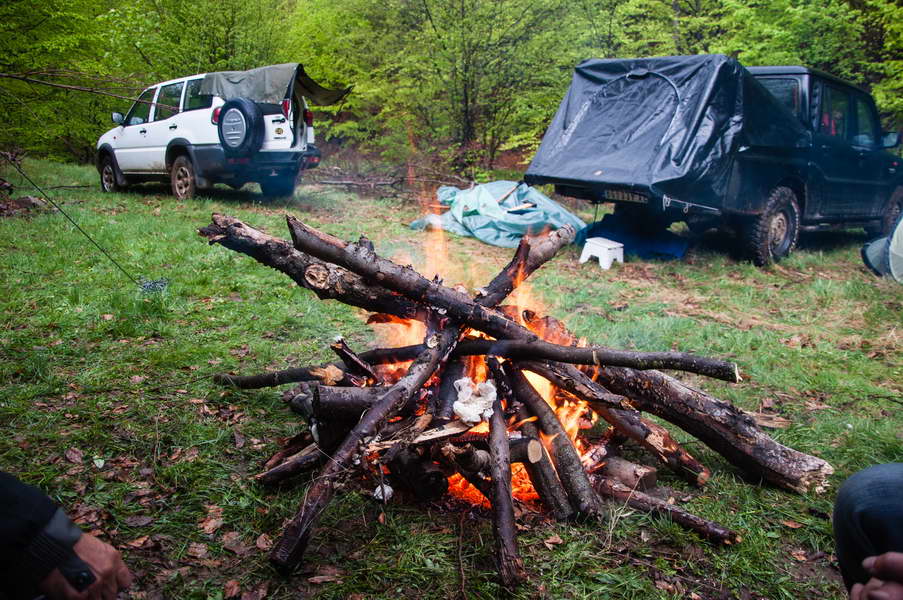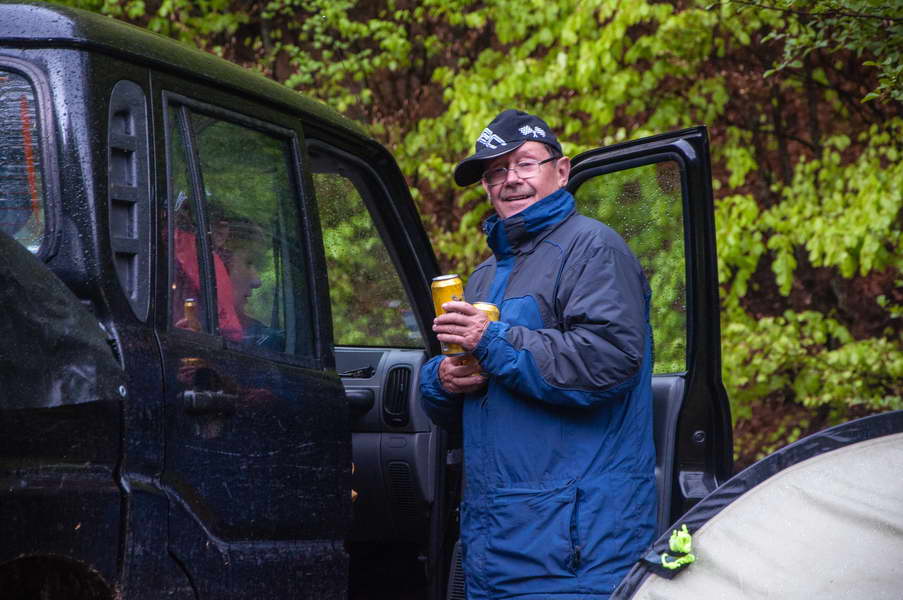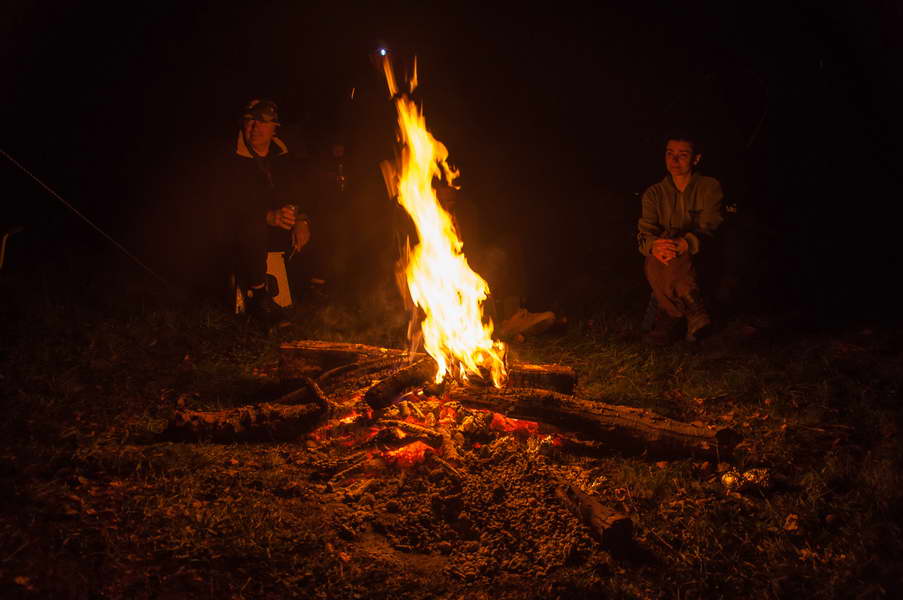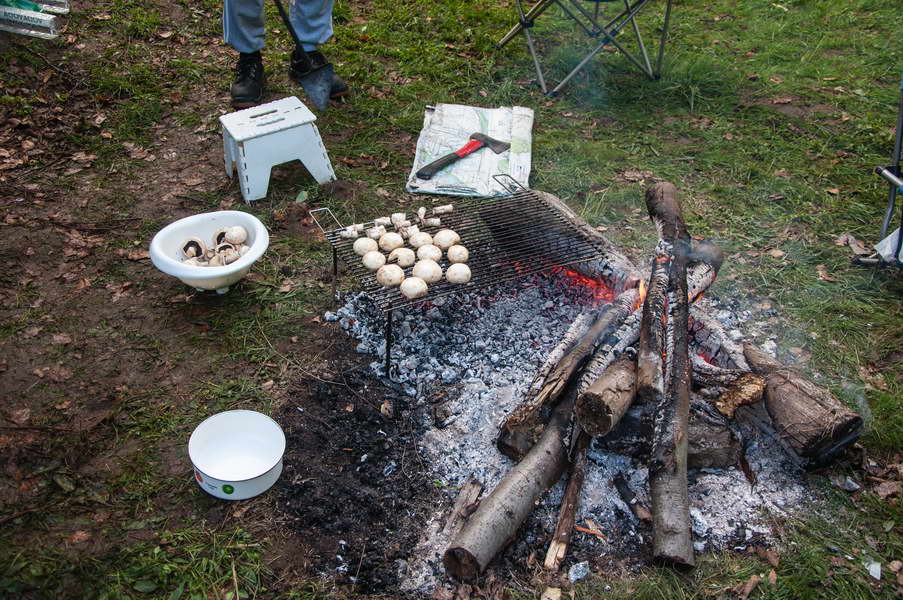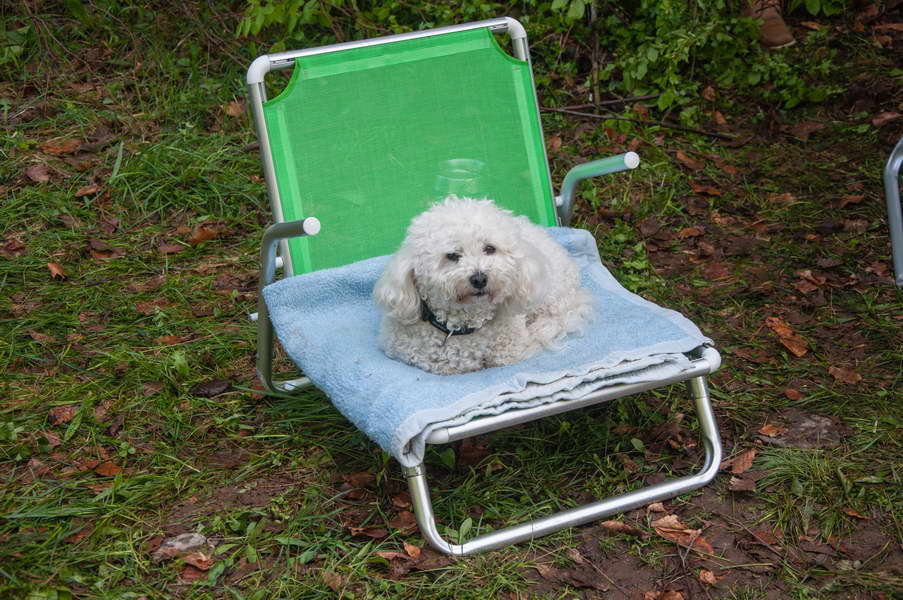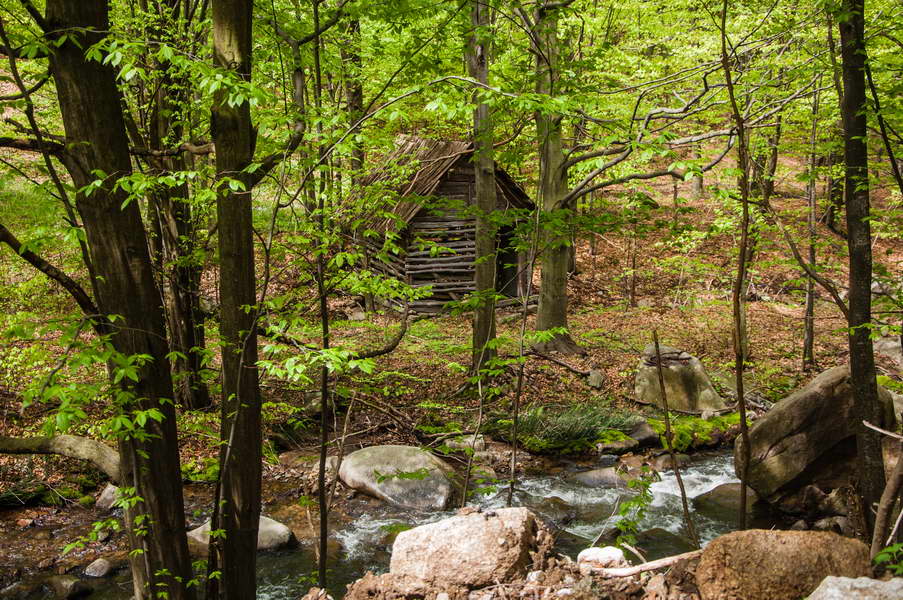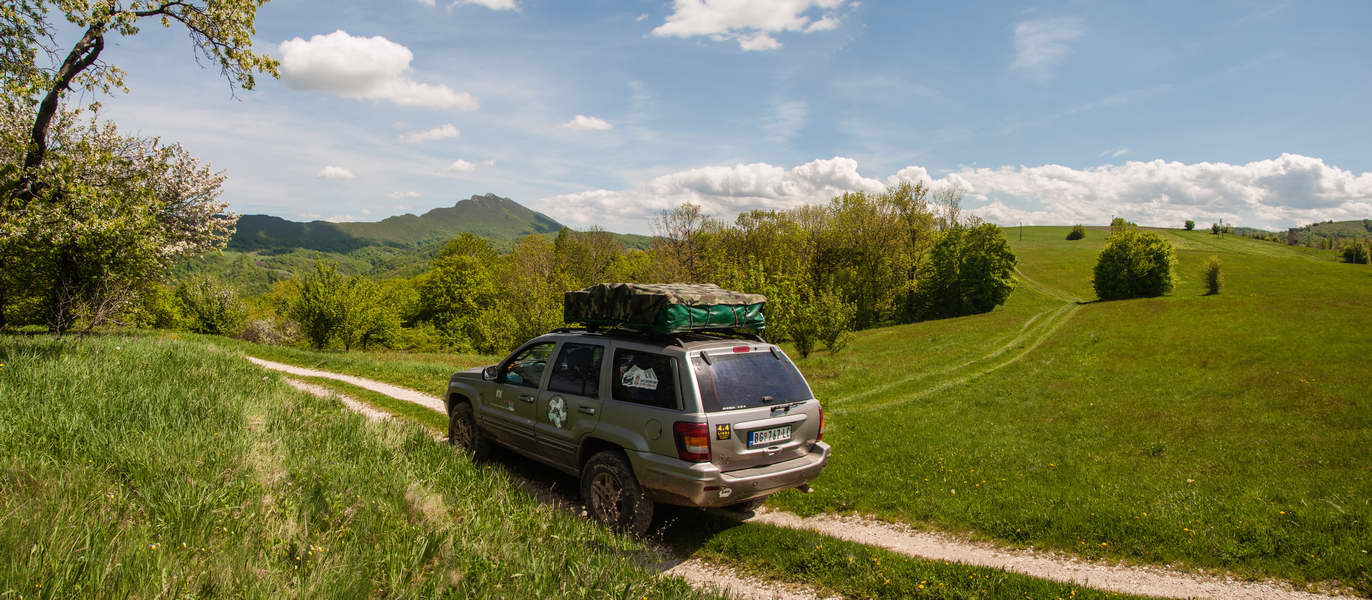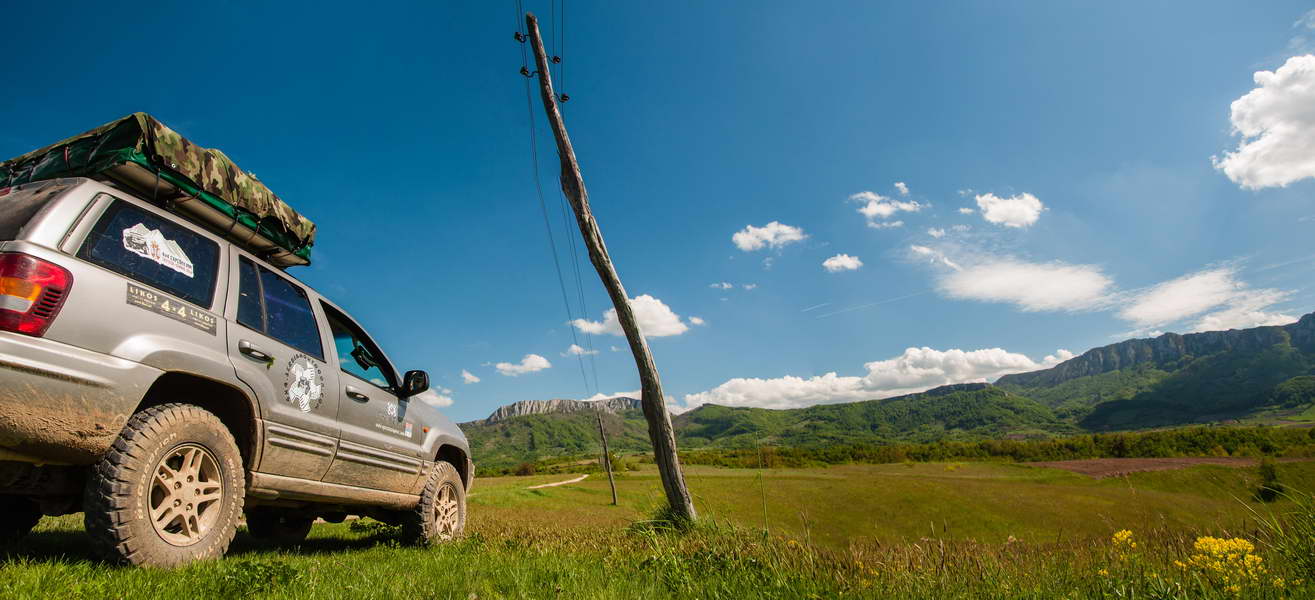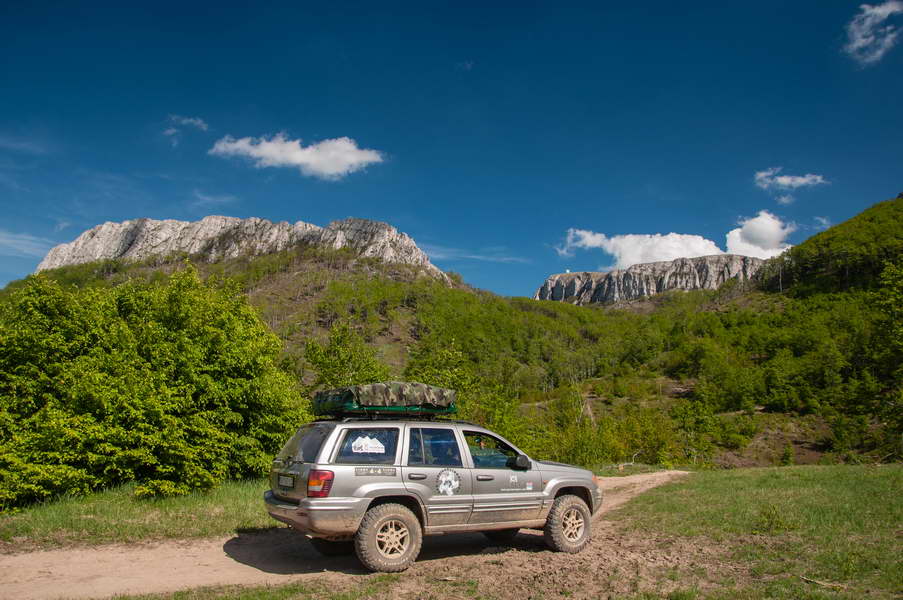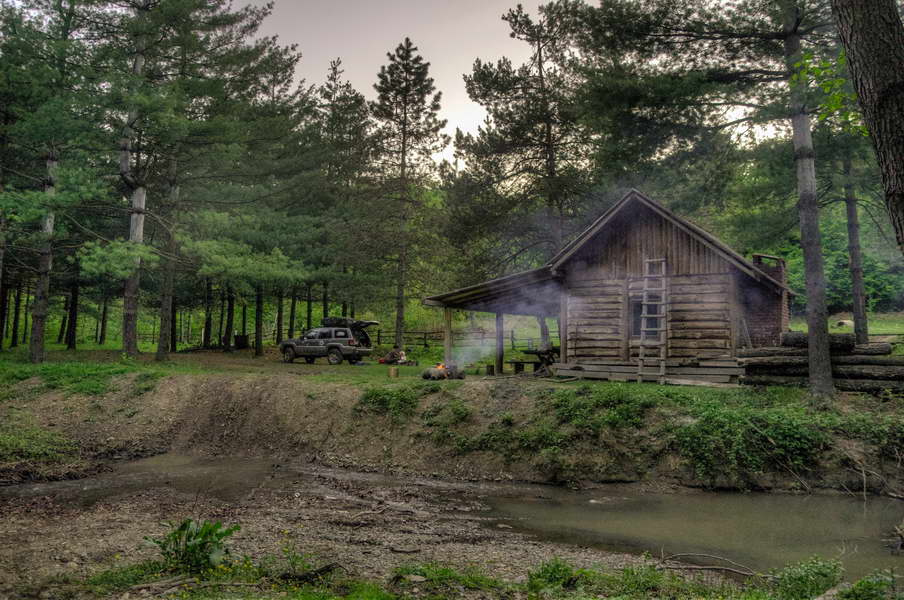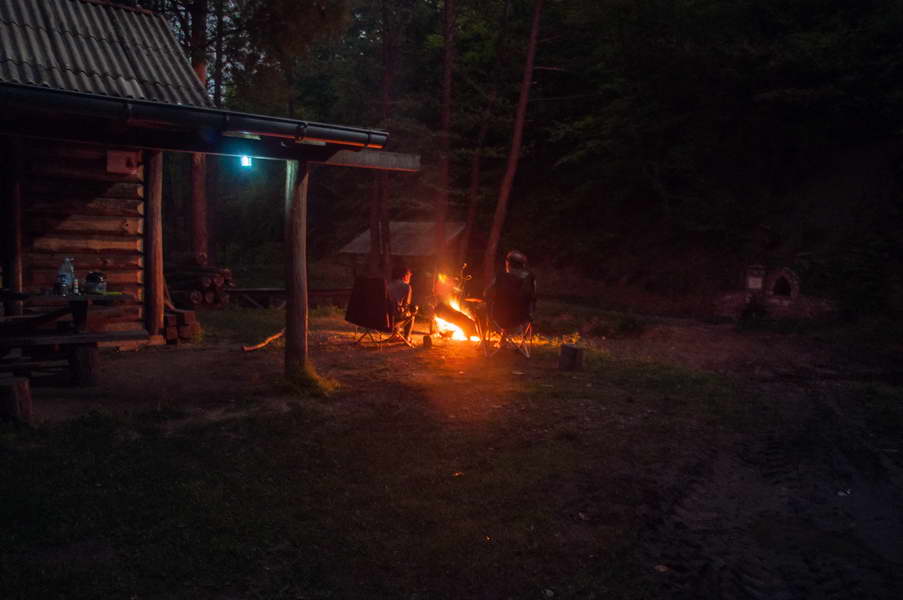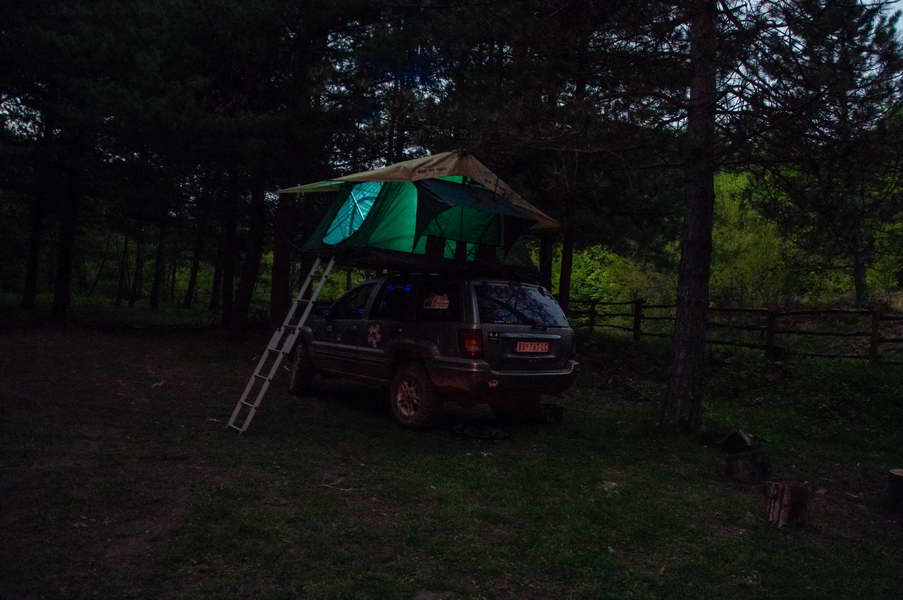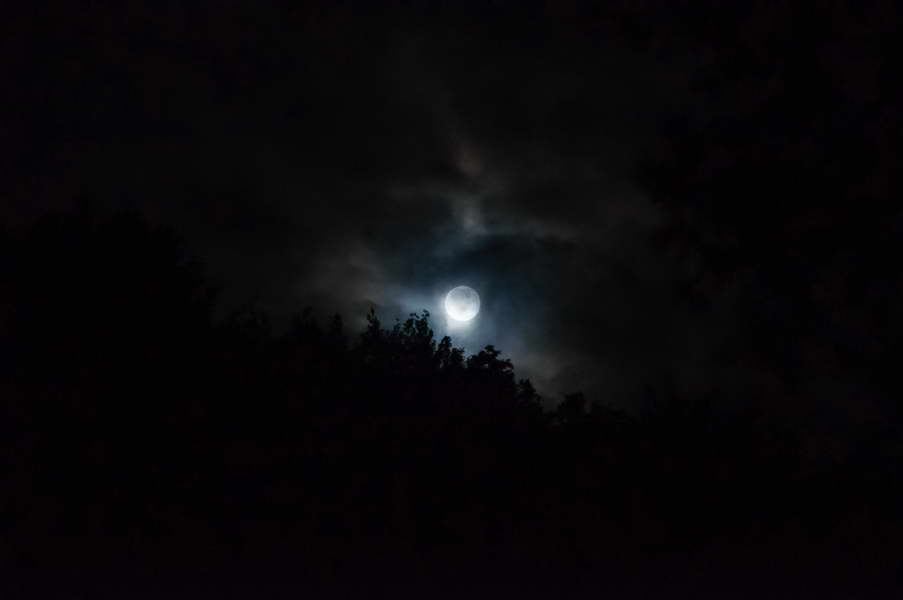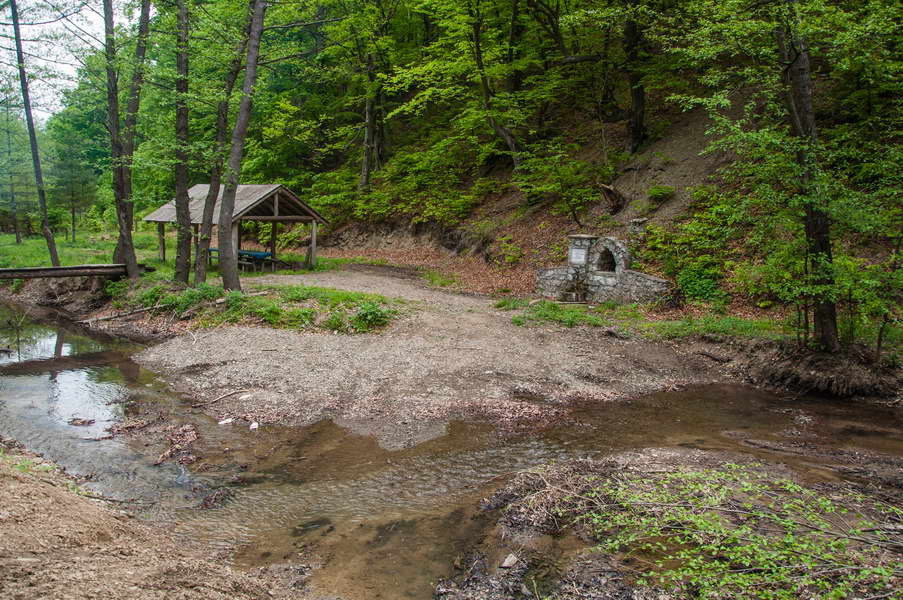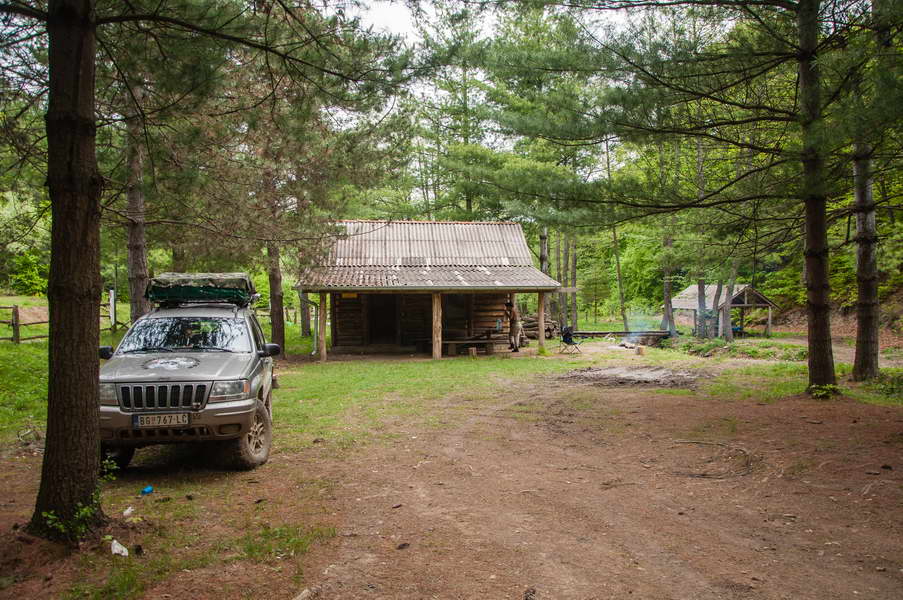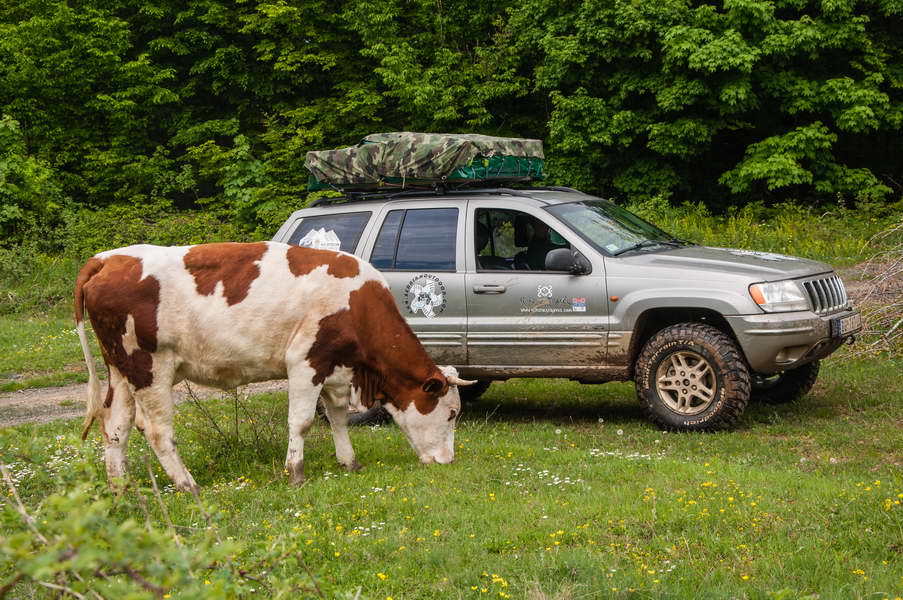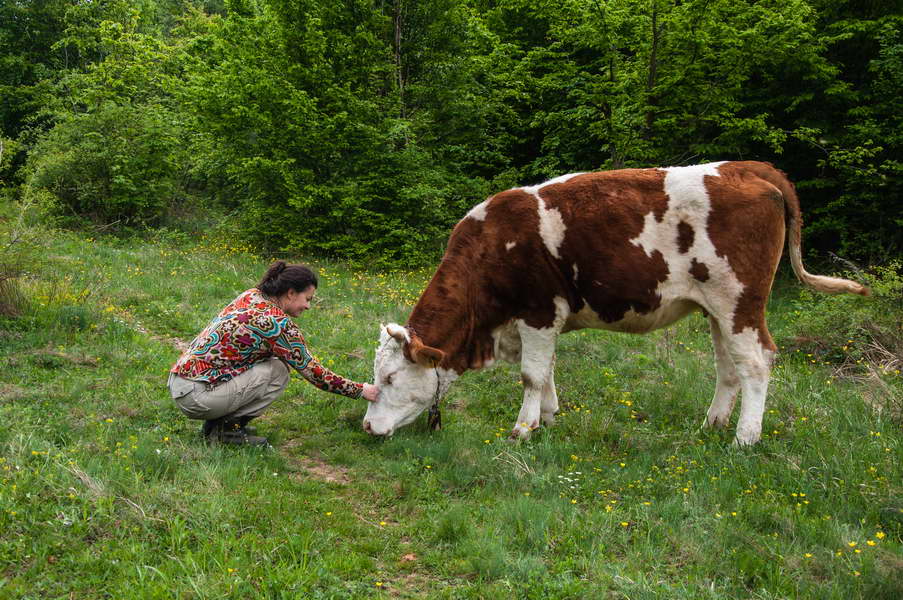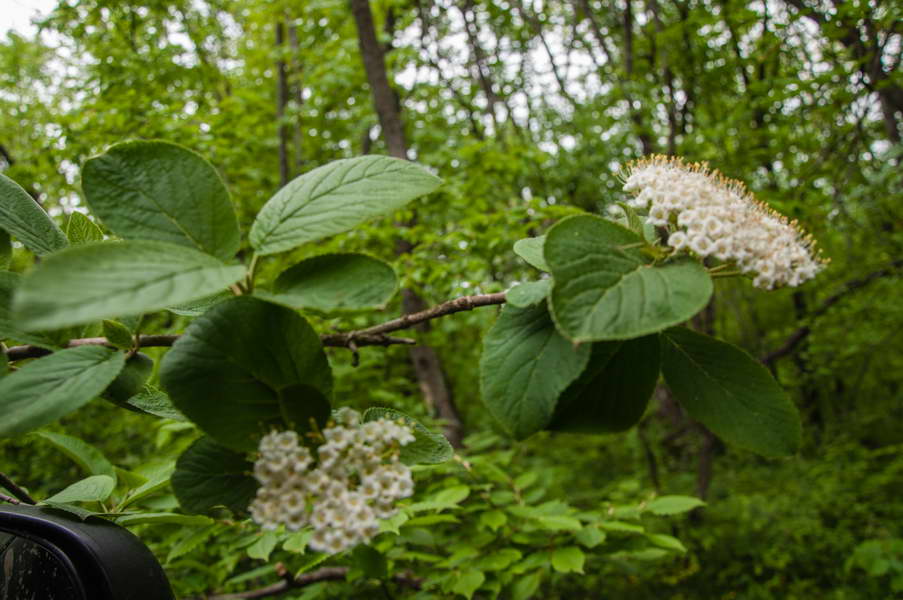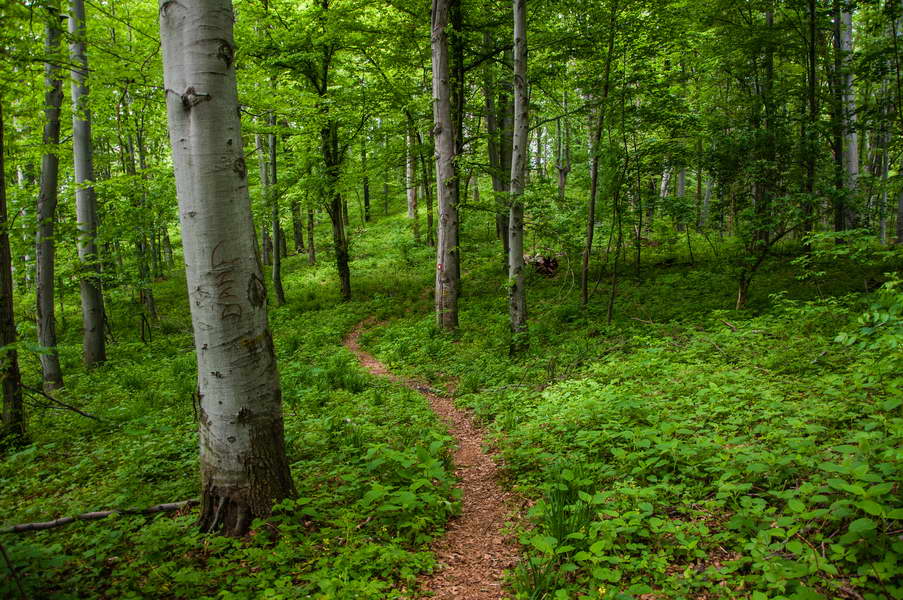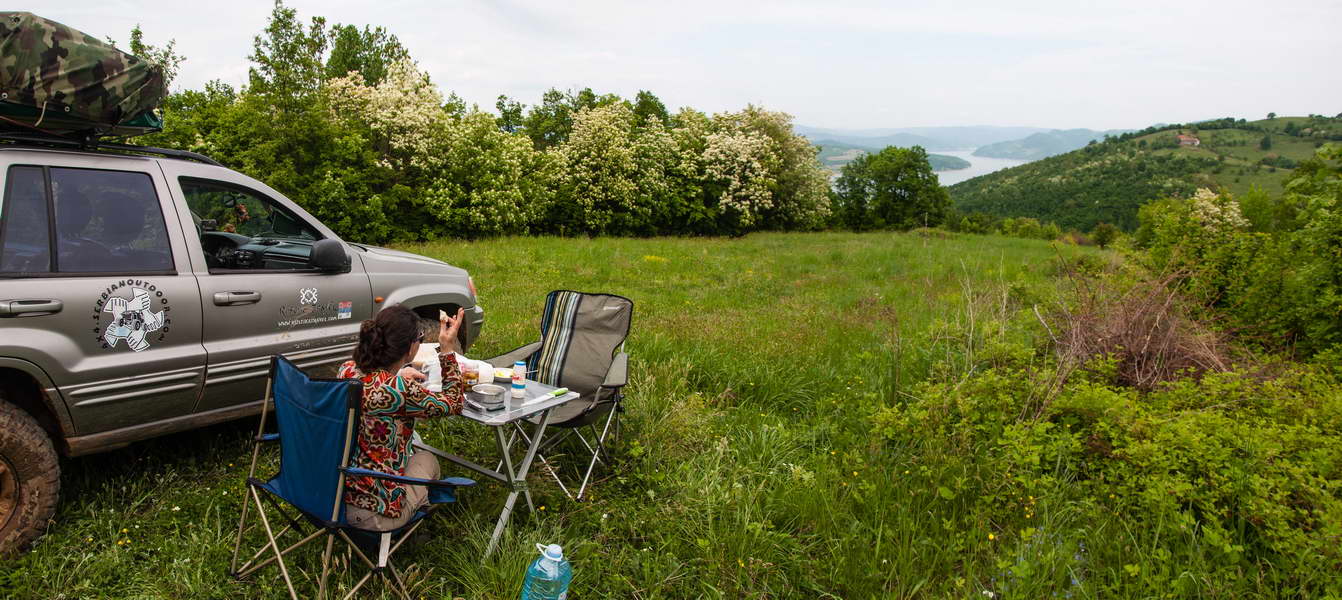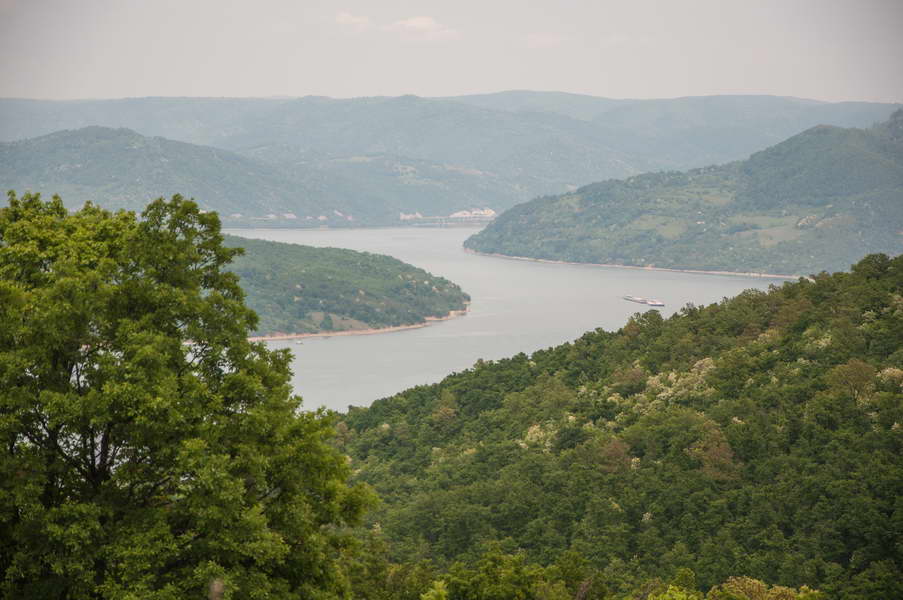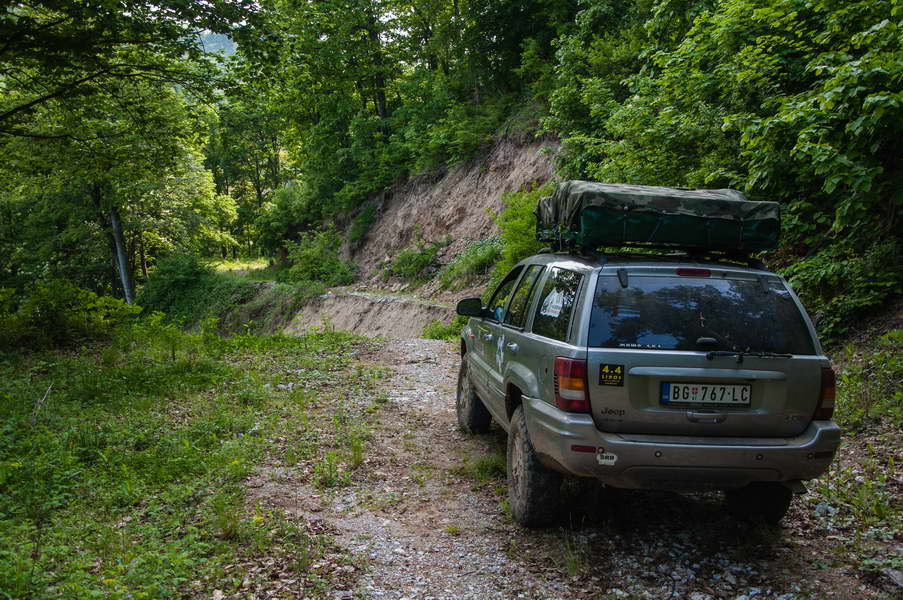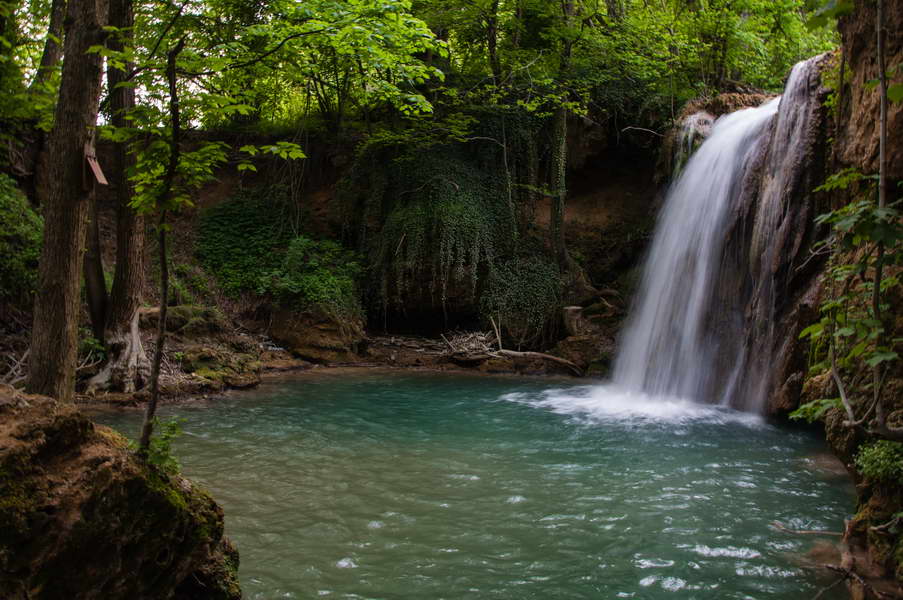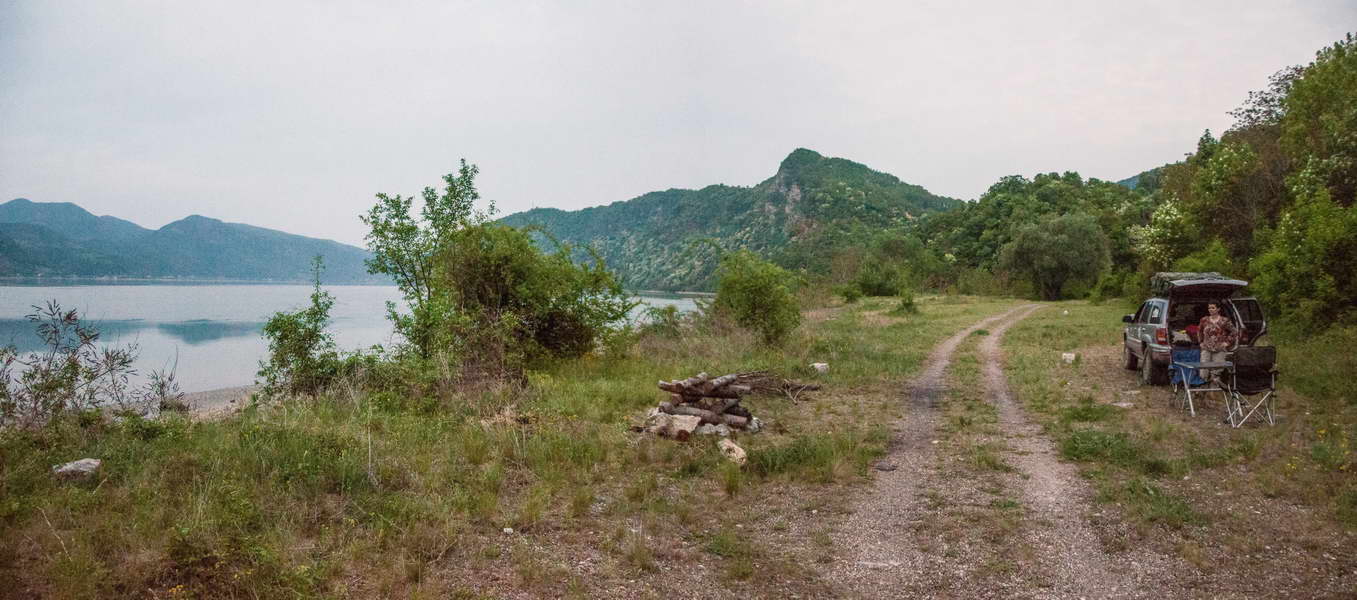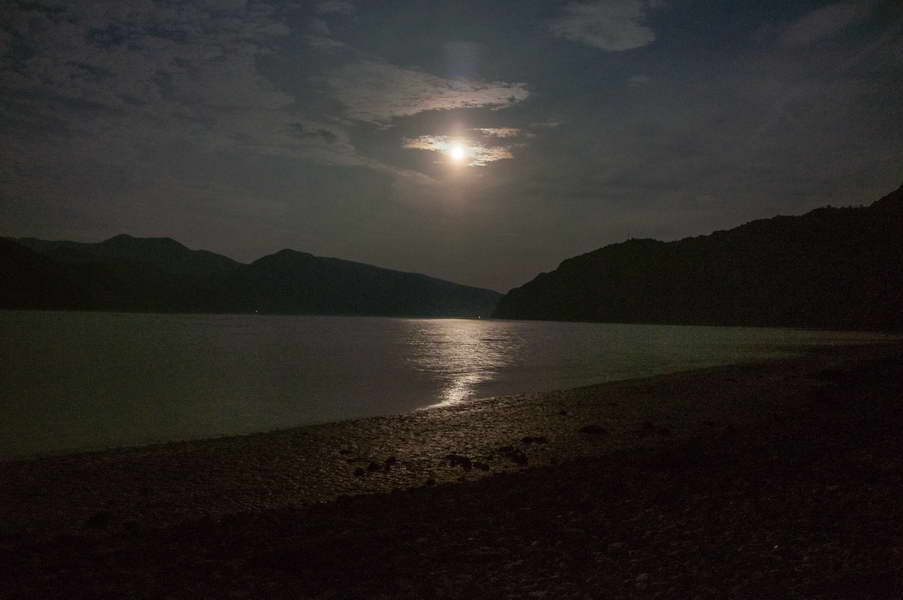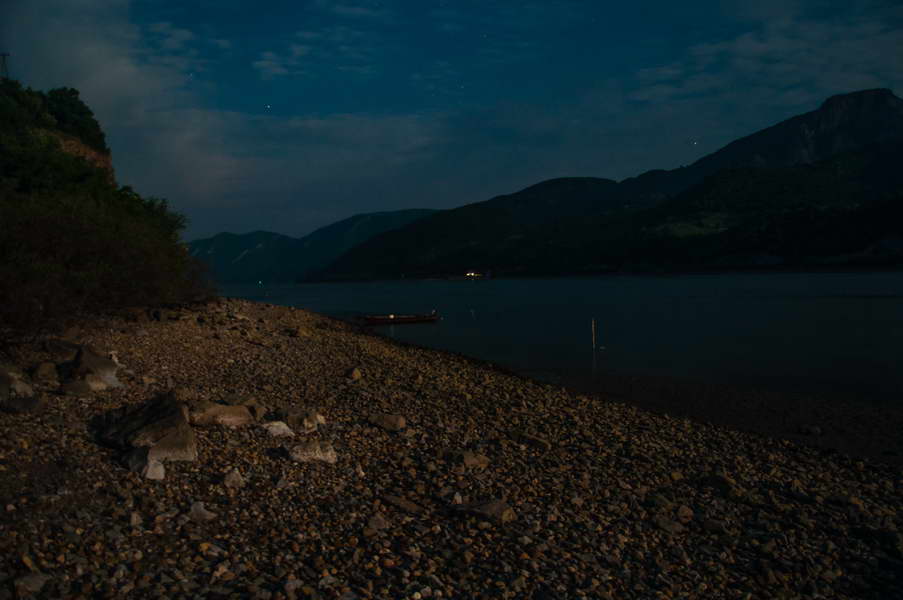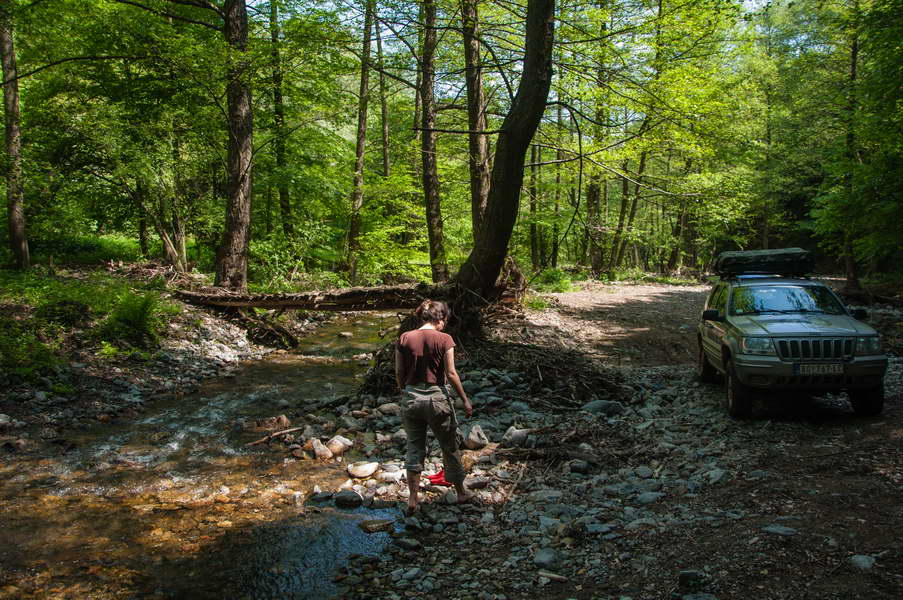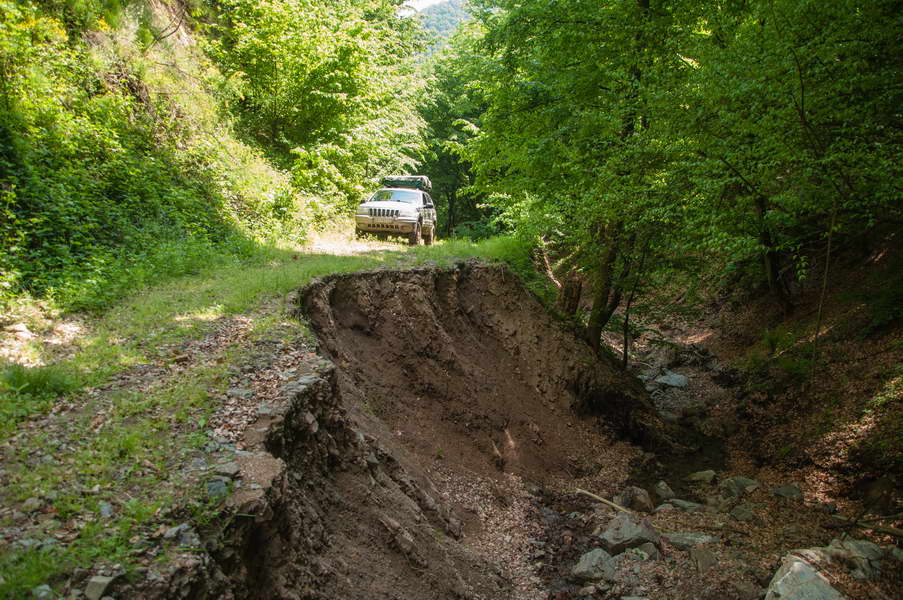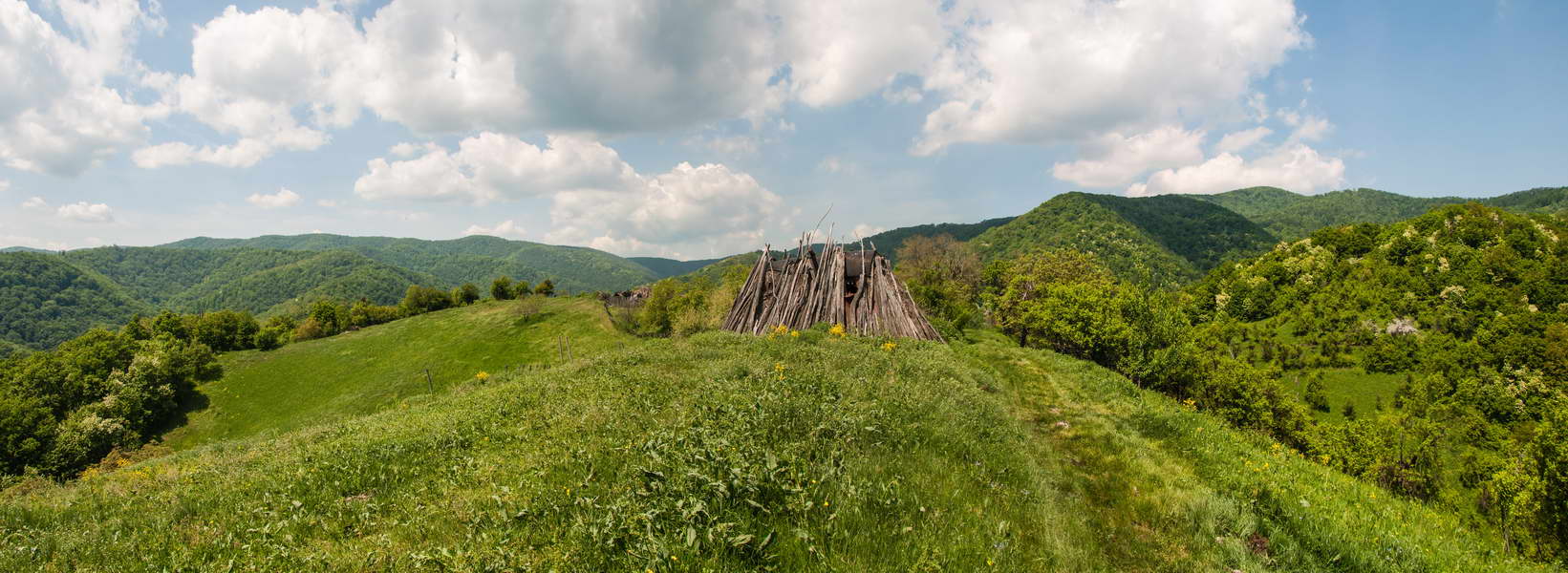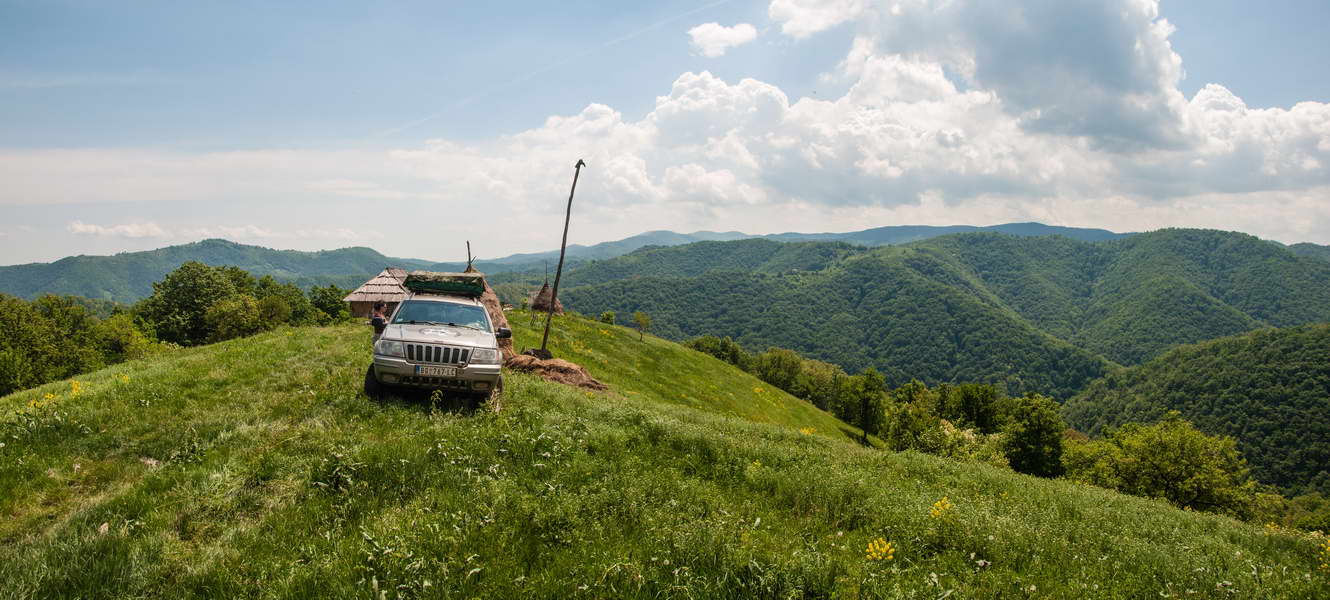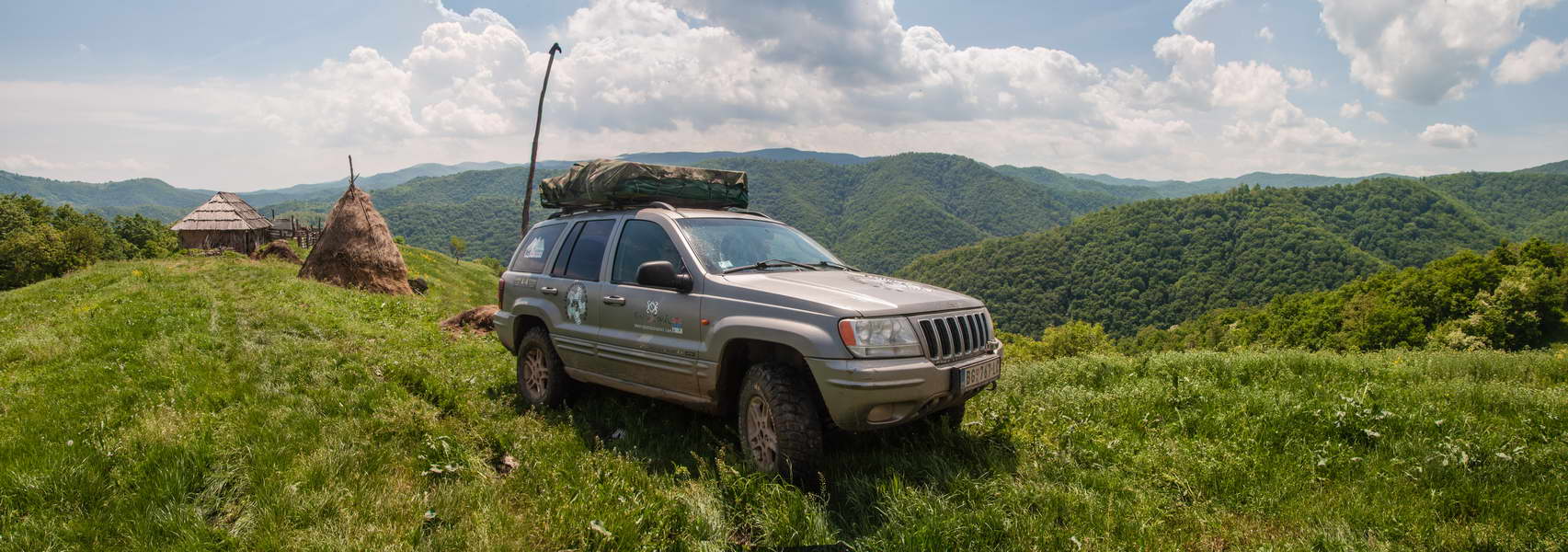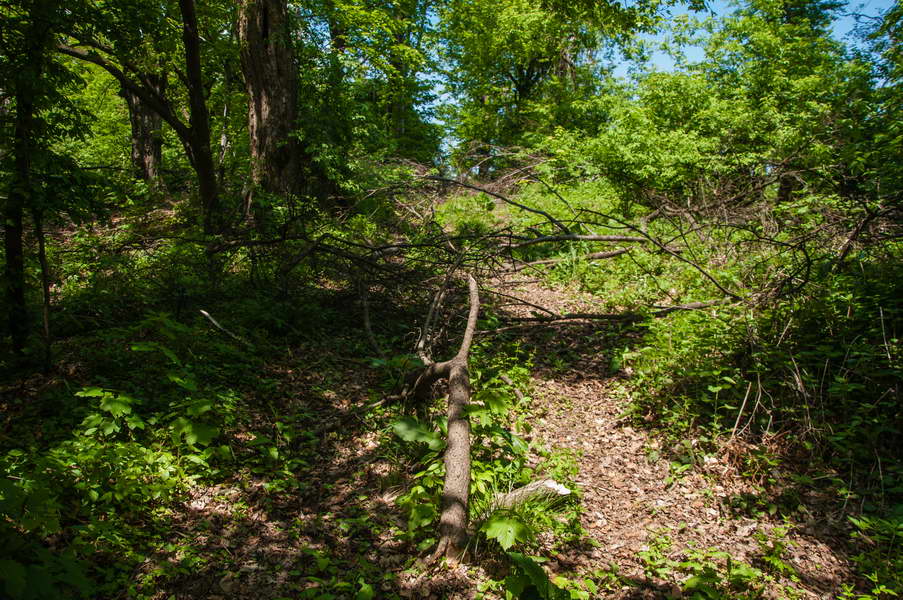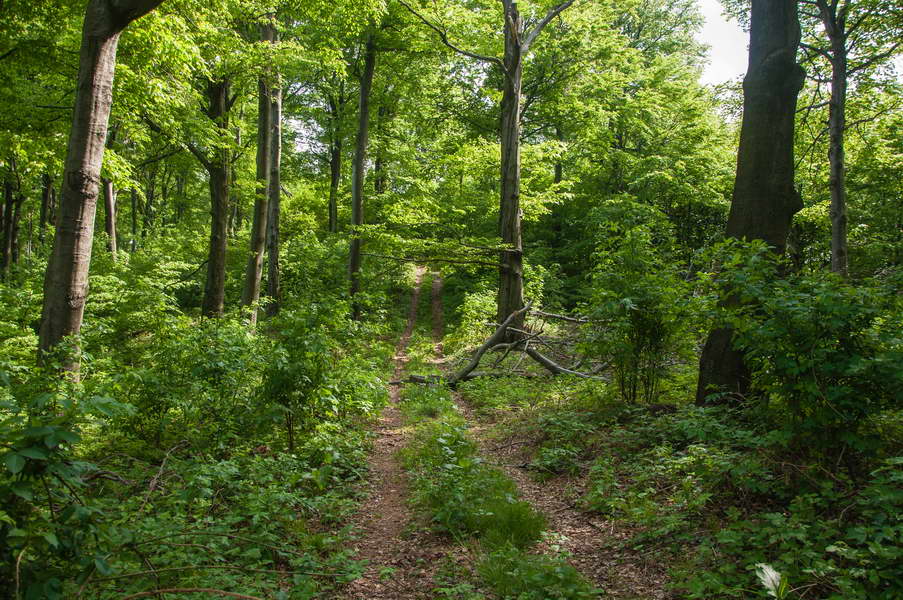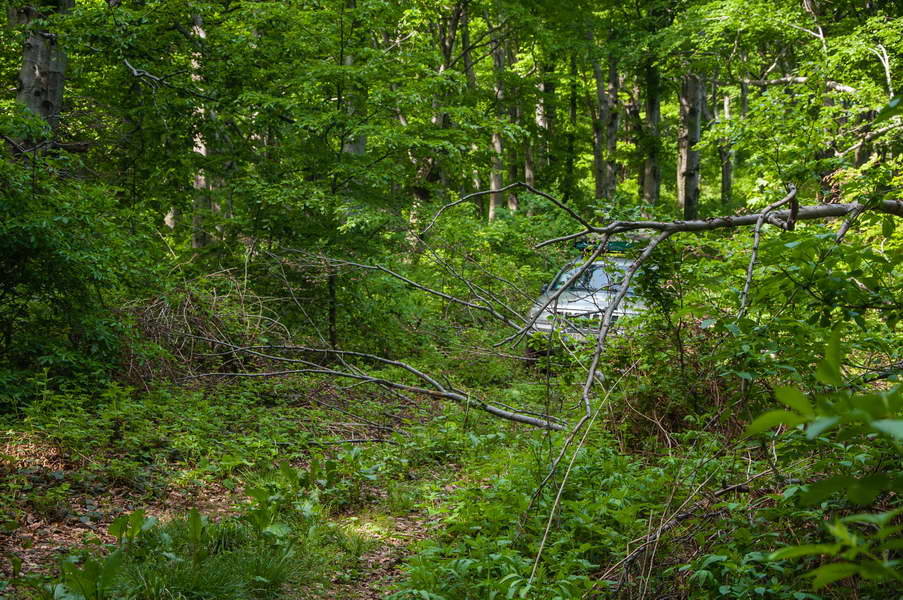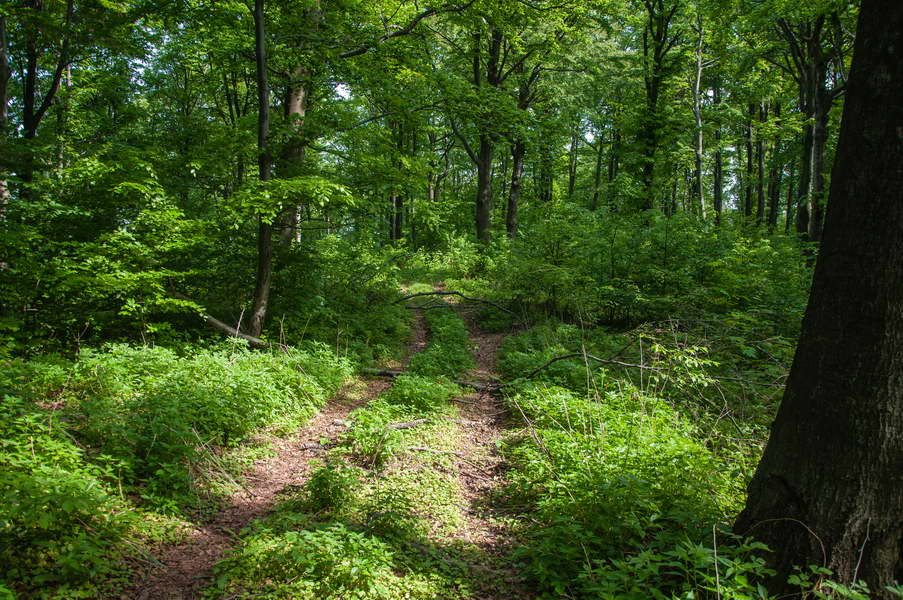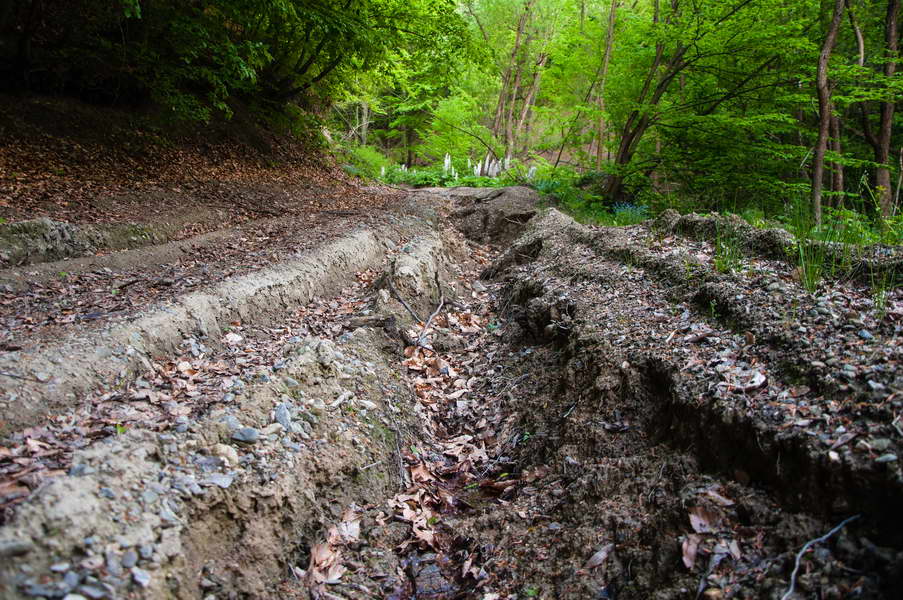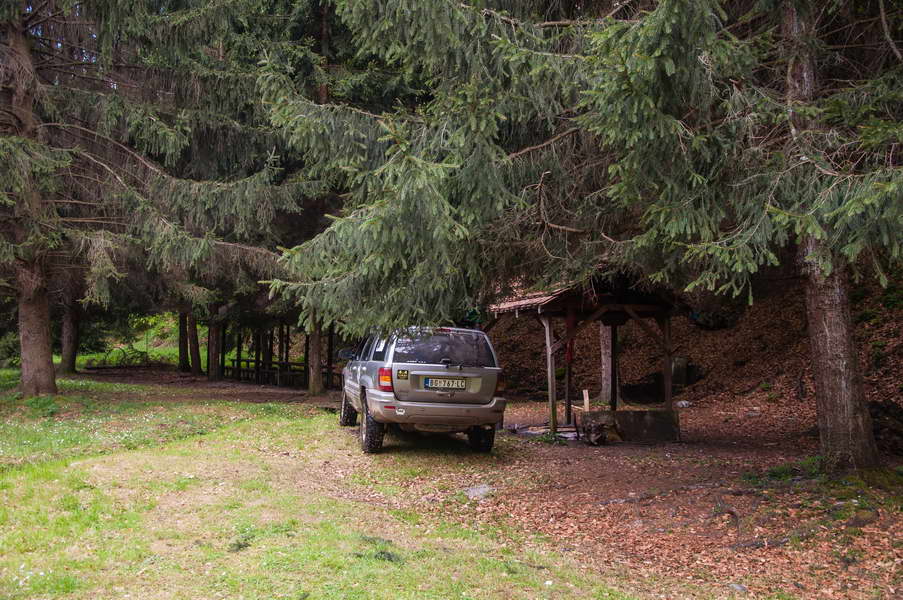A journey through east Serbia in spring 2015
Nature is changing faster than we can imagine. A forest trail that we once passed can be lost overnight due to a landslide, or deteriorate beyond usable state very fast due to excessive vegetation growth or fallen trees after extreme storms. If not regularly used, a forest trail can become unrecognizable and completely disappear in less than 5 years. So a collection of GPS tracks is only good if it’s made up of regularly inspected, and updated trails.

That is why we have to inspect our Serbian trails at least once a year, and more often in case of extreme weather in some area, that is suspected to have caused serious damage to known geography. Our springtime 2015 inspection of eastern Serbia was something that was very necessary after the catastrophic floods in the Iron Gate national park in September 2014, and the ice rain disaster in the forests all over eastern Serbia in December 2014.
 |
 |

What damage can ice rain cause, you’d probably ask? It freezes the moment it touches the branches, over time completely covering them in a heavy block of ice. The branches can’t endure the weight and they crack and fall off, and if the ice rain is combined with strong winds, even whole tree trunks can break in half, as if they were tiny wooden matches. And that is exactly what happened in an area spanning more than 200 km from the Danube in the north to Nišava river in the south. Not all forest were effected the same. Due to micro-climate specifics, some mountains were hit much harder than others, and the most damage could be seen on altitudes between 600 and 1000 m (above that there was snow instead of ice rain, and below that there was just good, old regular rain).

What we have seen during our inspection fulfilled our worst fears – many of our favourite forest trails are now undrivable, at least until we organize some field work to clear them from the fallen branches and trees. And I mean some really serious work – having one chainsaw and a few helping hands would take an entire season just to clear one of those trails. To be honest, forestry workers are helping, making the forest roads accessible at a pace they can manage, but their priority are the main forest roads – and those are usually out of our scope, since we prefer the roads less travelled (in fact, many of our favourite ones are probably not used by anyone but us). So for this season there will probably have to be a lot of compromise in our tracks, reverting to some main forest roads in places where all others are under a heavy fallen branches cover.
Svrljiške mountains

This is VERY tricky terrain. The easternmost part is heavy karst area, a very rocky plateau where offroading can become extremely technical, known among enthusiasts as “rock crawling”. We’ve tried to secure a trail to traverse the central highland area (comprised mostly of sinkholes and rocks), but there is 1 km in the very centre of it which can only be described as extreme, requiring top prepared vehicles, and experienced, cold blooded drivers (at a pace slower than pedestrians in places). Definitely not for everyone.
The remaining part is a very long, also quite technical ridge, along which, on the north side, runs an average quality road, mostly through dense forest. But, this part has suffered heavy devastation by the December ice rain, and the forestry workers have only cleared the first 4 km of the road – the rest is blocked by fallen trees and rocks. So you have to descend much lower, to the base of the mountain, and do a lot of rerouting. Maybe not a very good idea for the 2015. season (we’ve chosen just one technically attractive climb, and another similar descent in the easternmost part, from village Vitanovac to Periš).
Kalafat mountain
Exteremely forested terrain, resembling jungle in places. Even in normal seasons you have to fight trees and bushes to push through, and don’t even enter it if you hold your paintwork dear (or don’t have sillicone protective sheet covering). But in summer 2015, rather not mess with Kalafat, there’s also way too much debris on the ground. However, if you’re seeking for mud fun, you can easily find it in the deep, dark Kalafat forests between Popšica, Kravlje and Kopajkošara villages.
Devica mountain

 Devica is a big highland plateau at 1000+ m altitude south of Sokobanja spa resort, which is a very exciting terrain for 4×4 explorers. Several long ridges coming from the south meet at the wide central plateau full of sinkholes, which is not nearly as extreme as Svrljiške mountains. The central plateau is mostly beech forest, nicely mixed with pinetrees in parts, but the surrounding areas tend to be quite bushy, so you have to be ready for some unpleasent squeeching noises on your sides while trying to push through the (in places too narrow) trails. Climbing the ridge from the surrounding stream valleys can become technical, dealing with deep ruts, rocks, and also mud in places (but nothing to get concerned about, or stuck in).
Devica is a big highland plateau at 1000+ m altitude south of Sokobanja spa resort, which is a very exciting terrain for 4×4 explorers. Several long ridges coming from the south meet at the wide central plateau full of sinkholes, which is not nearly as extreme as Svrljiške mountains. The central plateau is mostly beech forest, nicely mixed with pinetrees in parts, but the surrounding areas tend to be quite bushy, so you have to be ready for some unpleasent squeeching noises on your sides while trying to push through the (in places too narrow) trails. Climbing the ridge from the surrounding stream valleys can become technical, dealing with deep ruts, rocks, and also mud in places (but nothing to get concerned about, or stuck in).

There’s a lot of opportunity for interesting exploration all over Devica, and also the adjecent Ozren mountain to the west, connected by a 900+ m pass next to the striking Oštra Čuka peak (a GREAT scenic viewpoint). We’ve chosen a central traverse of Devica this time, descending right to the centre of Sokobanja (there’s also a possibility to descend more to the east, to the Dugo Polje village).
Seselac cave and Slemen mountain

Seselac cave is a very nice camping spot, where you have some tables and benches along the river, and also drinking water. There is a lake above the cave (it’s a short, walk through cave), but the water is quite muddy due to the nature of the soil. From the Seselac cave a nice ascend to Slemen mountain starts, sporting a 6 km long west-east ridge, slowly rising to the highest point at 1099 m. Unfortunately, the area of Slemen mountain was among the hardest hit by the December ice rain, and the lower parts of the once beautiful pine-dominated forests have been turned into something resembling a pack of gigantic matches stuck into the ground protruding into the sky – almost not a single tree was preserved intact!

However, forestry workers have done their work there, at least on the main ridge trail, which has been made drivable, although in some places you barely squeeze between the cut tree trunks. The higher parts of the forest are somewhat less damaged, and overall, it’s still a very nice forest trail, worth to drive on and make a short rest by the WW2 monument at the peak, making photos of the beautiful surroundings.
Kovej and Polome (Kučaj mountains)
Kučaj mountains are HUGE. It’s the largest uninhabited place in Serbia, without a single human settlement on an area of 50×50 km. Just canyons, forests, pastures, highland plateaus, waterfalls, rocky peaks – a true haven for wilderness lovers. And there is one part of it that holds a special place in our hearts – Malinik ridge in the far east, and Lazar’s canyon to the north of it. And on the slopes of Malinik, there’s Kovej, a grassy plateau right above Lazar’s canyon, a magnificent viewpoint, where we often spend our time recharging mental batteries in silence, far from urban madness.

 Last December had a heavy impact on the 6 km long rocky trail leading from the village of Zlot to Kovej, but we managed to clear it with 2 chainsaws, 2 hand saws and 7 pairs of hands. Enough to reach our camping spot on Kovej. However, the Polome rainforest, that starts from the Kovej stream west of Kovej terrace will be inaccessible for quite a while. We were the ones who pioneered the 4×4 trail there in 2013 (after about 10 years that no vehicle had ventured to the heart of the forest), and this time it will be much more work to make it accessible again. There is simply a huge amount of fallen branches and tree trunks on the trail, but the good news is that a small percentage of the magnificent centuries old rainforest trees have been seriously damaged, and the environment still looks the same as before.
Last December had a heavy impact on the 6 km long rocky trail leading from the village of Zlot to Kovej, but we managed to clear it with 2 chainsaws, 2 hand saws and 7 pairs of hands. Enough to reach our camping spot on Kovej. However, the Polome rainforest, that starts from the Kovej stream west of Kovej terrace will be inaccessible for quite a while. We were the ones who pioneered the 4×4 trail there in 2013 (after about 10 years that no vehicle had ventured to the heart of the forest), and this time it will be much more work to make it accessible again. There is simply a huge amount of fallen branches and tree trunks on the trail, but the good news is that a small percentage of the magnificent centuries old rainforest trees have been seriously damaged, and the environment still looks the same as before.
Homolje mountains and Stol
In the area north and northeast of Kučaj mountains the damage is moderate, although you shouldn’t count on a routine pass along any forest trail that isn’t regularly used by the locals. It will probably take the entire 2015 season to get into a situation that could be called “back to normal”. And, of course, the chainsaw should still remain standard 4×4 equipment in eastern Serbia, just in case.

Access to Stol mountain, even using the most attractive ridge approach directly from the village Gornjane to the southeast, is quite normal. And as always, the meadows by the Stol lake are a great place to camp, maybe even make a one day break from a tour there, hiking, picking mushrooms and enjoying the surroundings. But we didn’t have the time to rest there, because a lot more serious work was awaiting us further north…
Iron Gate national park (Miroč & Šomrda)

Iron Gate national park is huge, and it’s the biggest continuous forested area in Serbia (97% of Majdanpek municipality is covered by forests). It takes up all of the mountainous land on the right bank of the Danube river along the Iron gate gorge, sporting some fantastic spots for exploration and enjoyment of adventurers. Such a huge territory is not easy to manage, but the park rangers are still trying their best (although understaffed).


Our main concern in the Iron Gate mountains was not the ice rain damage – thanks to the lower altitudes than other area, so the ice rain in December appeared only among the highest peaks. And the main trails have already been cleared by the NP workers, showing that they really care about their park. To be honest, not all of it – depending on which way you’ll be headed, you’ll still have to get out of your 4×4 and remove a branch here and there. But the situation is not nearly as critical as further south.


However, there is one big concern when river and stream valleys in the Iron Gate NP are in question, and that is the water damage that took place in the catastrophic floods last September. There is not a single river valley where the road didn’t need to be repaired, so heavy machines are out there, and that will obviously be the main job of the NP management this season. Some of our “secret” roads are completely gone, beyond repair (and recognition), such as the one following the Pesača river. Others have been partially restored, but most still have landslides blocking them from accessing the ridges. So finding a working way to climb to the marvelous, deep forest ridgeways of the Iron Gate, will be the main challenge of season 2015. In the few days spent there at the beginning of May, we’ve seen enough to get an idea where it’s possible, and where it’s not. So, with just a little bit of compromise, we have solutions how to make traversing the Iron Gate mountains a memorable experience for our guests.And the floods have “constructed” a few new technical challenges here and there, just to make life for the adrenaline junkies less boring 😎
See the entire album from this scouting tour (160 images)
If you need GPS tracks and other data for your own eastern Serbian tour, contact us, or examine our GPS logistics services offer on the Rustika Travel site.








